May 10, 2020
Martha O'Kennon
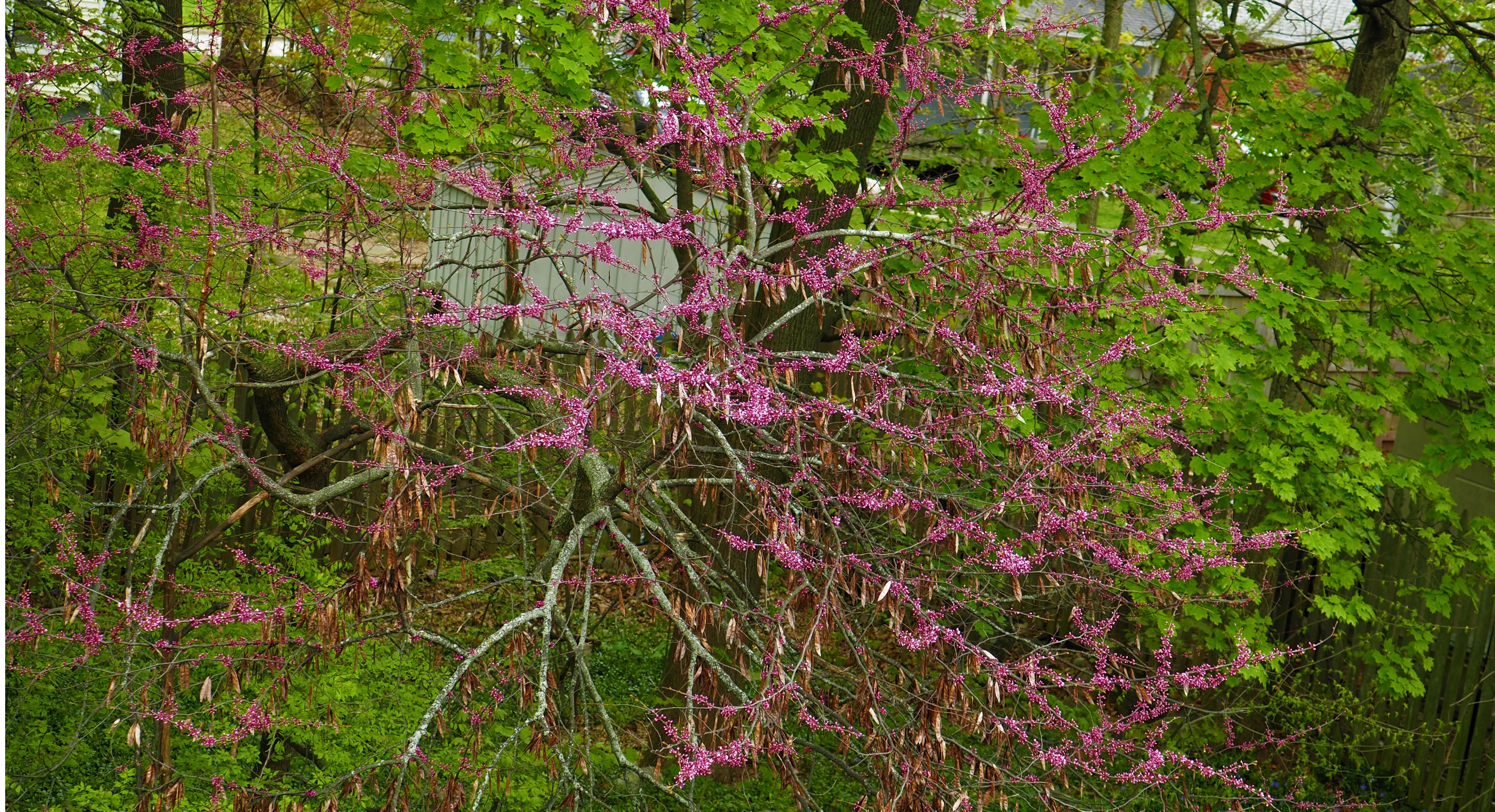
Last week we said that Spring had pulled out the big guns on Winter. Well, you know how that often falls apart. This week we were visited by the "Polar Vortex", which sort of resembles the side of the family that sticks around long after the turkey gives out. It didn't stop the flowers from blooming but it even scared the bravest of the spiders. We had one lovely day when the toads moved in for their annual love fest. The next day was cold and it hasn't really warmed back up yet. Still (above) the redbud hasn't forgotten to bloom!
Remember that there is information in the name of the file for each image. You can see it by mousing over the image - look at the lower left of the screen. Or you can click on the image to get to the (usually) larger image. Then the info is displayed in the address line above. Sometimes the second click will actually display a different view of the original image.
For some reason, my neighbors' yard has at least a couple kinds of violets. There is the light light blue (picture 1) and the only light blue (right side of picture 2) and sometimes white ones with a bit of blue streaking in the center(left of picture 3). Oh gosh, maybe there are only two kinds.

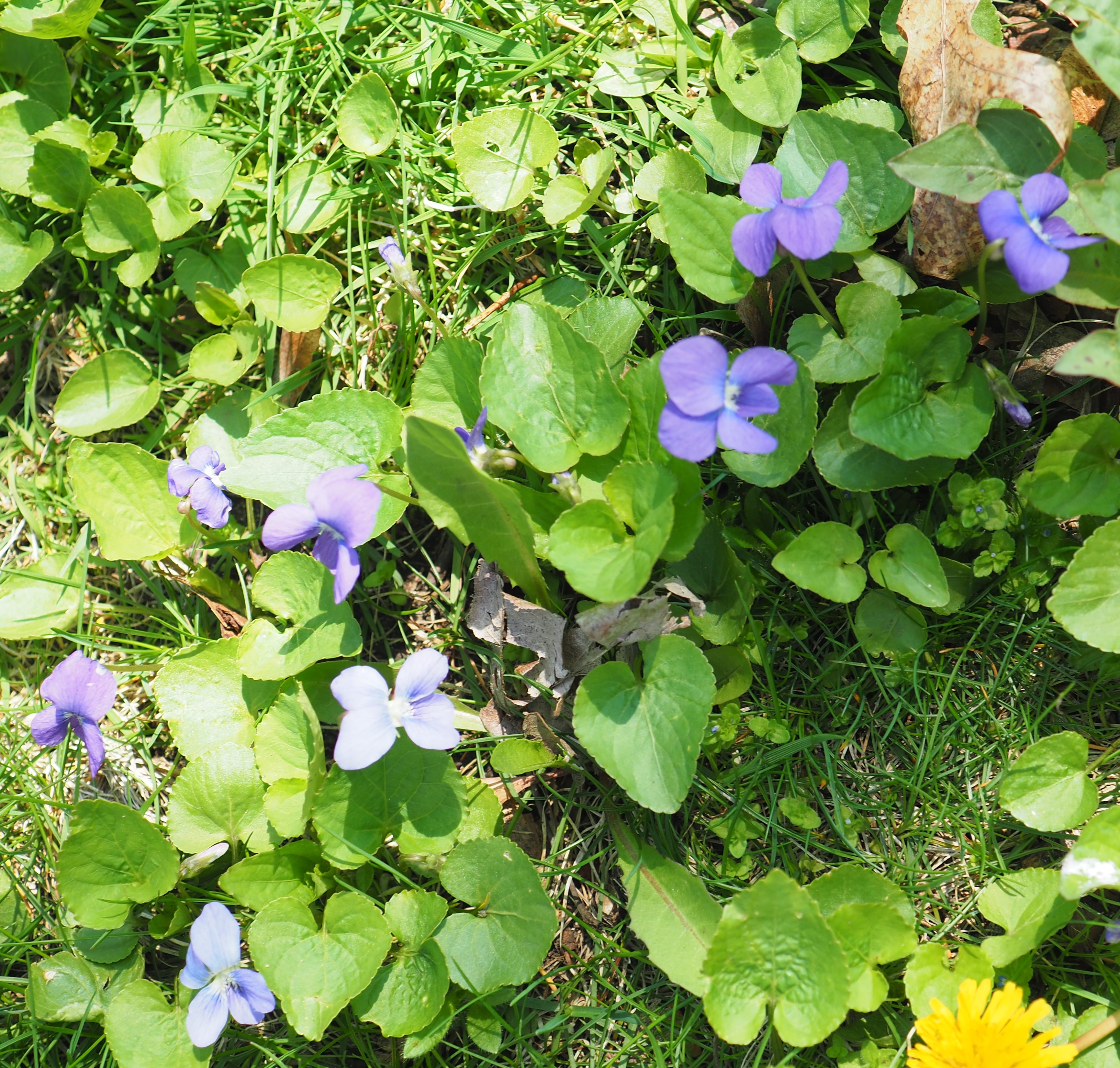
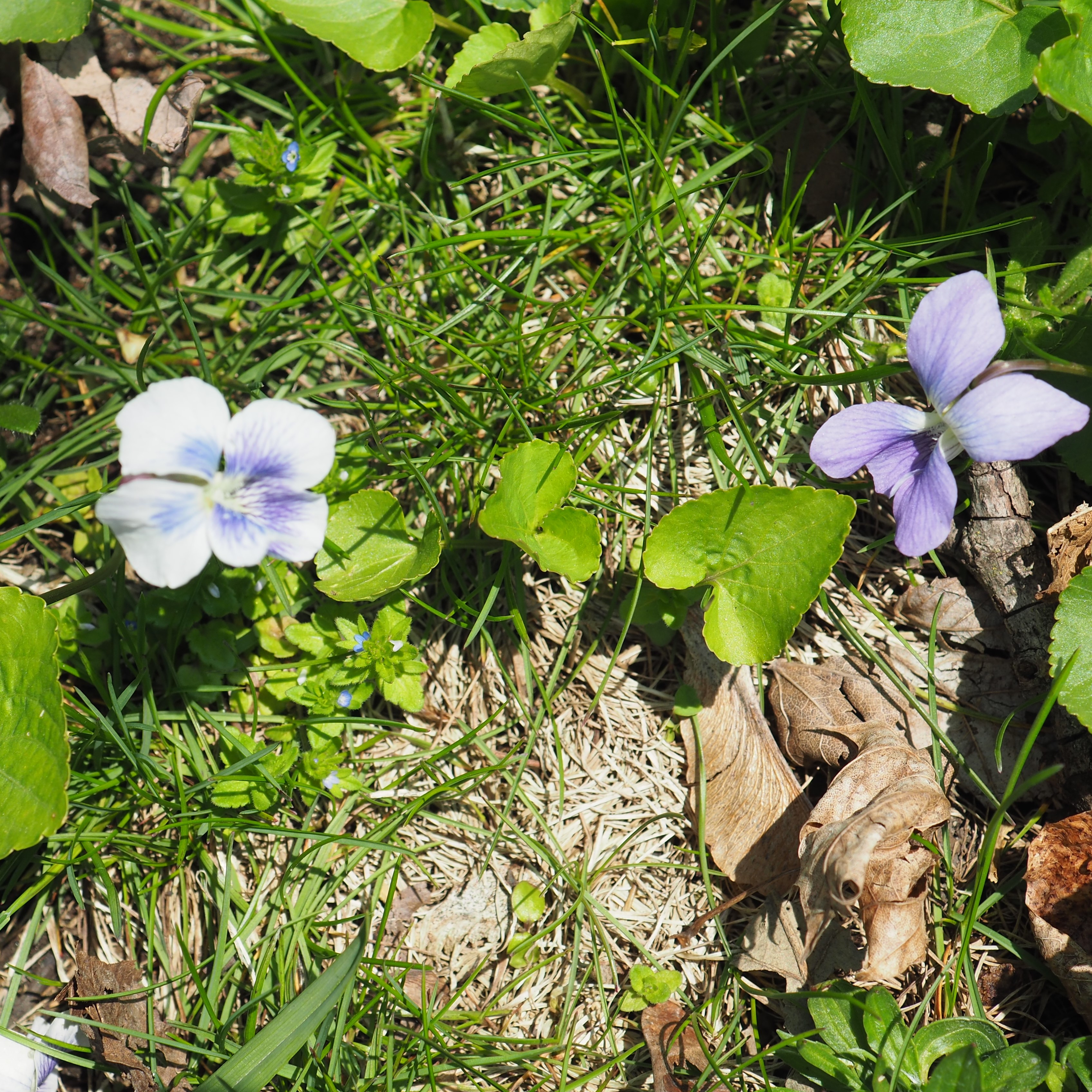
The ants we have been seeing for a while: First, genus Camponotus - Carpenter and Sugar Ants. Next, our faithful friend the Small Honey Ant again after dining at the Wall - I wonder what they DO eat. Third, a muscle-man, the Eastern Black Carpenter Ant, carrying in its mandibles a Fly the size of its own yellow-spiky-tailed body.
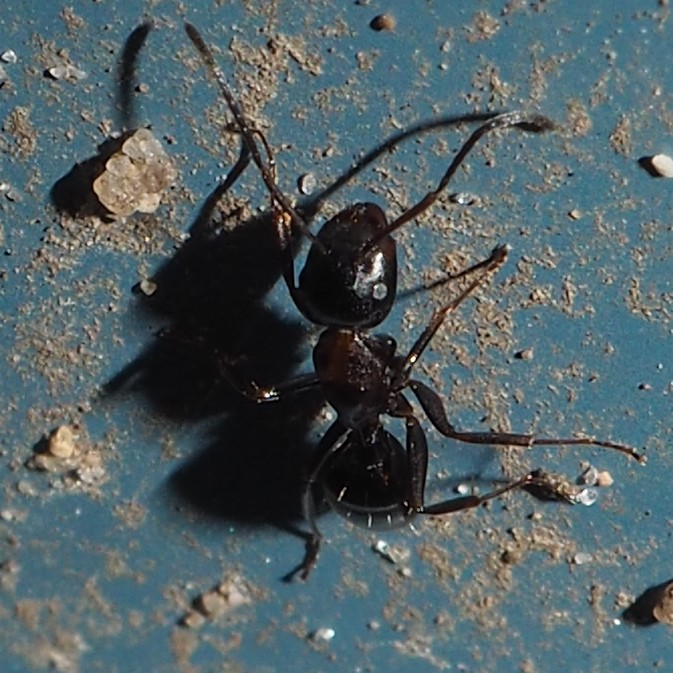
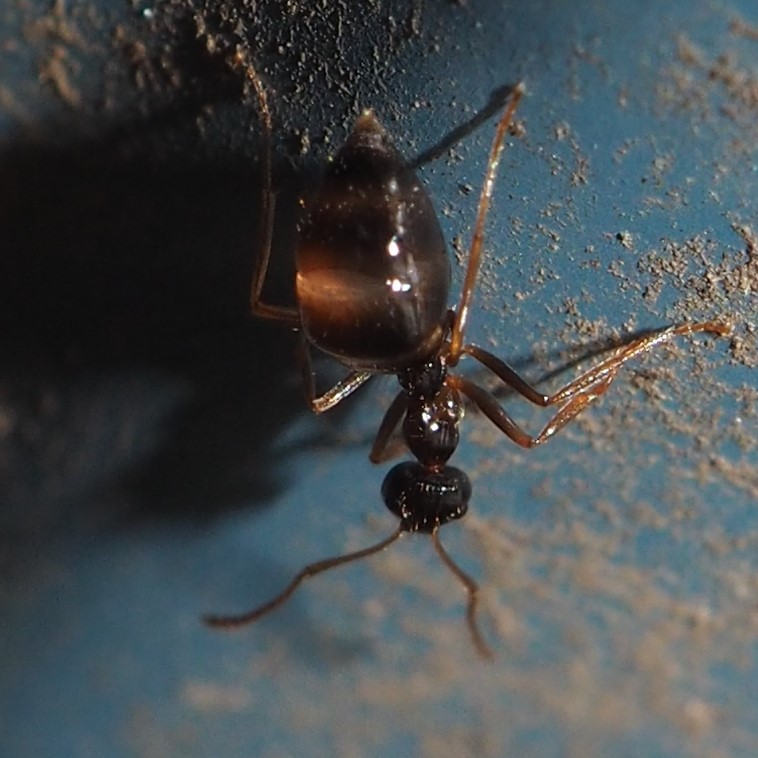
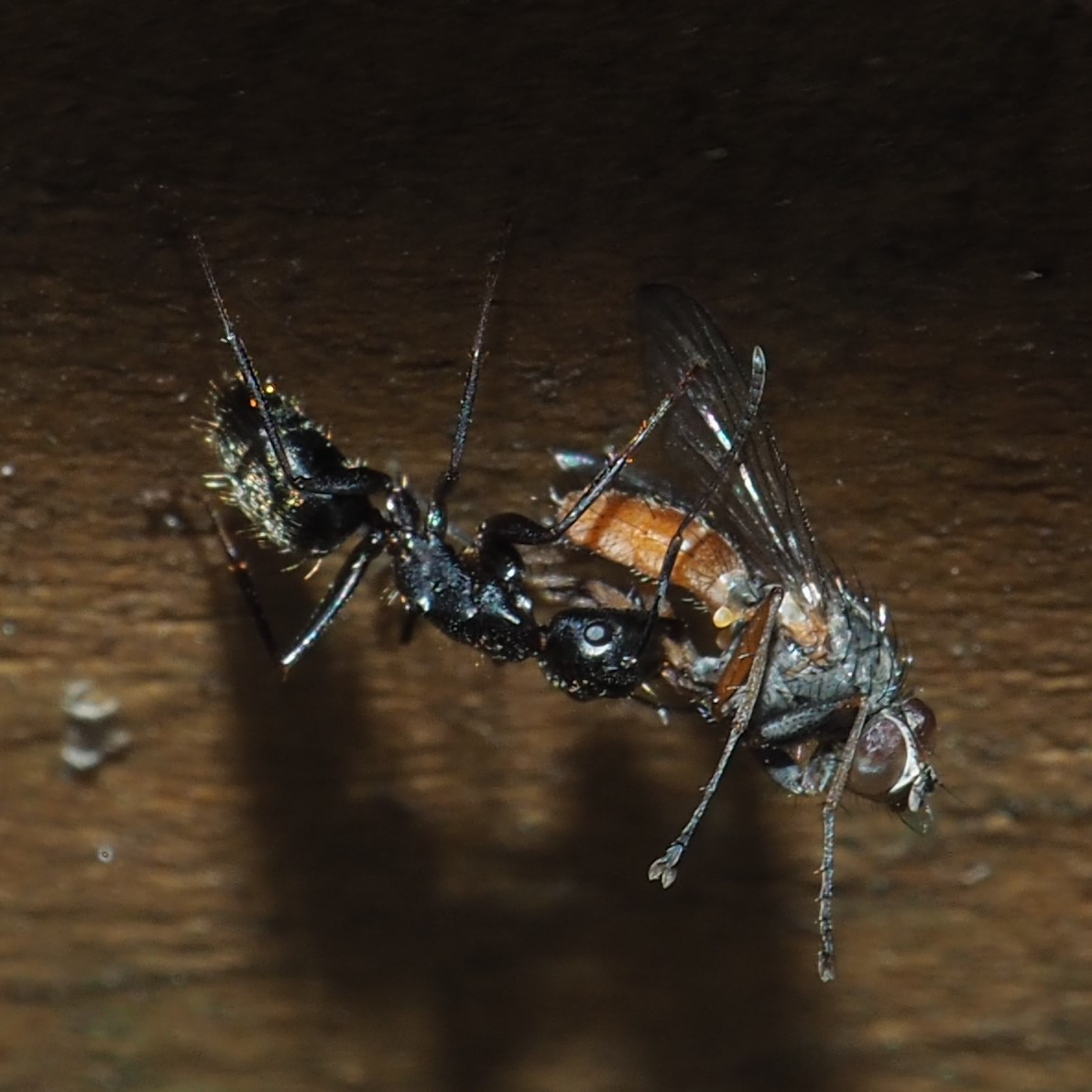
This week was very satisfying for the Barklouse hunters among us. Barklouse nymphs are so tiny that they're almost invisible for most eyes. At the stage they are in right now, they are only a little larger than the period (full stop)symbol. Since they're only a little less blue (and a little more like pastel green) they blend in fairly well with my workshop's blue steel siding. One of the first ones I spotted this season was seen while cropping a photo of the leafhopper Erythridula abolla. That was on February 20, 2020. Back on October 12 and 24 of 2019 I saw two adult Graphopsocus cruciatus, each with a clutch of eggs.
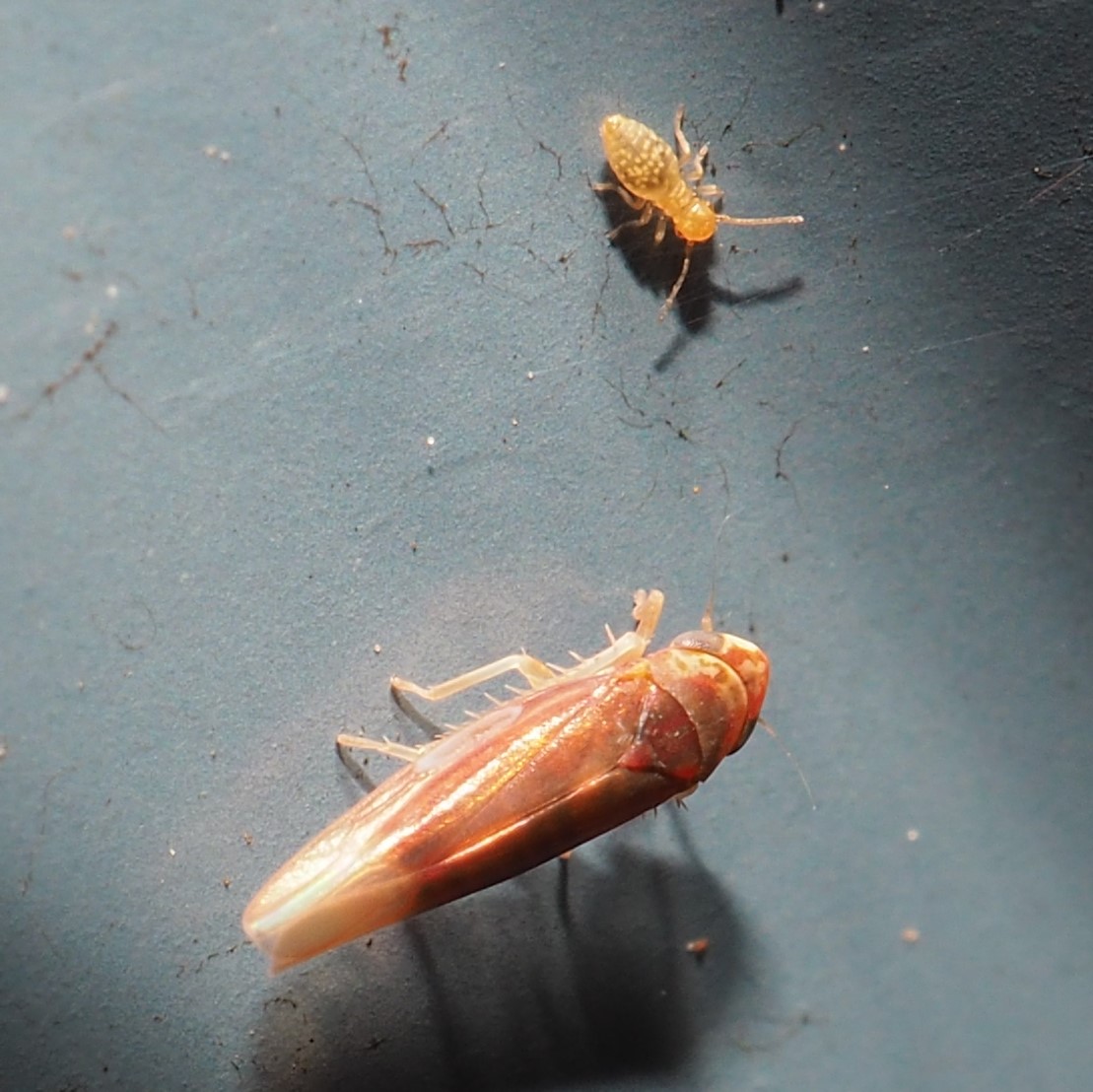
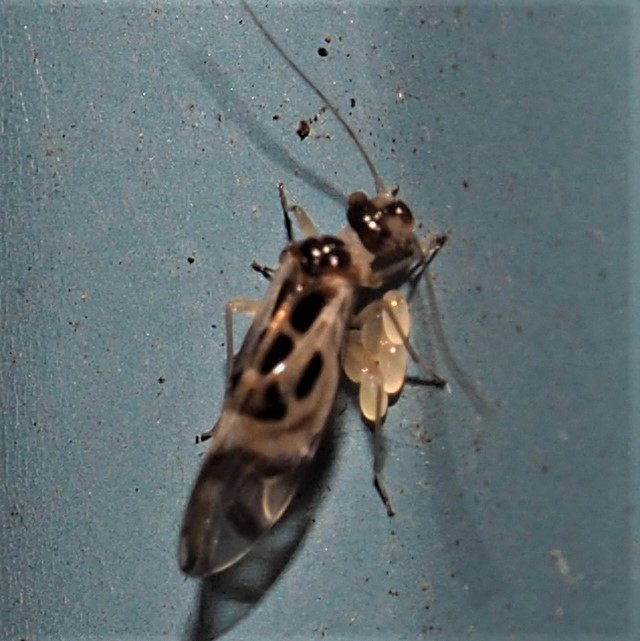
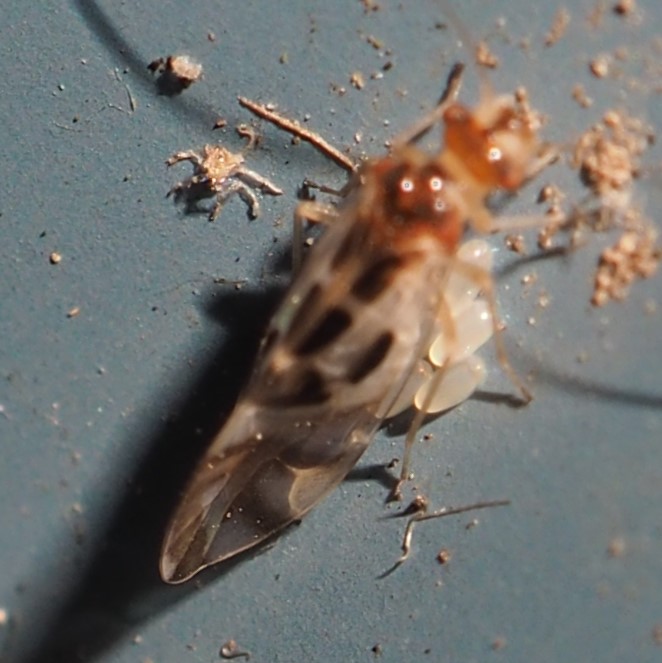
It turns out that the easiest game is to be found near the places where the siding panels come together at an angle. I suddenly found that I'd shot the same scene a couple of times. On May 4th I found this picture of some debris with one barklouse nymph, and then on May 6th, I found the same scene of debris and this one containing TWO nymphs. Both these shots were made at the same place but unfortunately I didn't recall where the place was. Finally on the 7th after walking the length of the south side of the shop (that's where all the tiny nymphs had been showing up), finally, finally, a bit above my eye level I got a shot of the original scene with NO nymphs on it. I'm wondering if that scene had been one of the places where one of those mamas had laid her eggs. I also wonder if, although the egg remnants SEEM to have hatched out their contents, it is still possible for it to hatch out a few more nymphs. So I plan to keep it in sight as one of the more interesting places to look for nymphs.
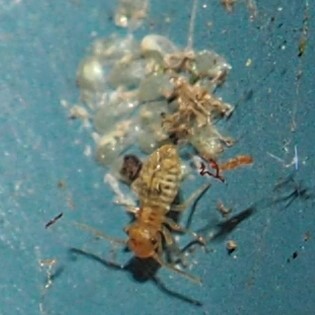
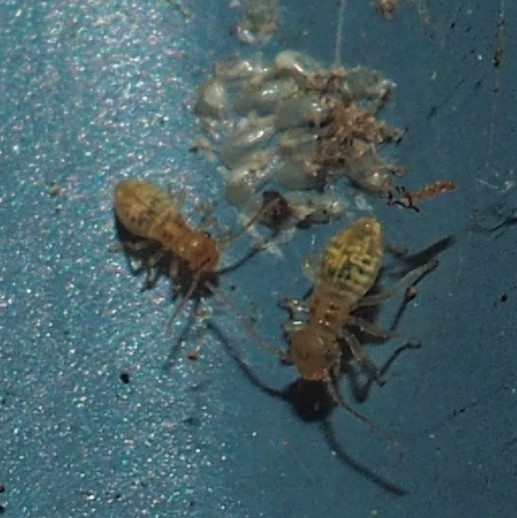
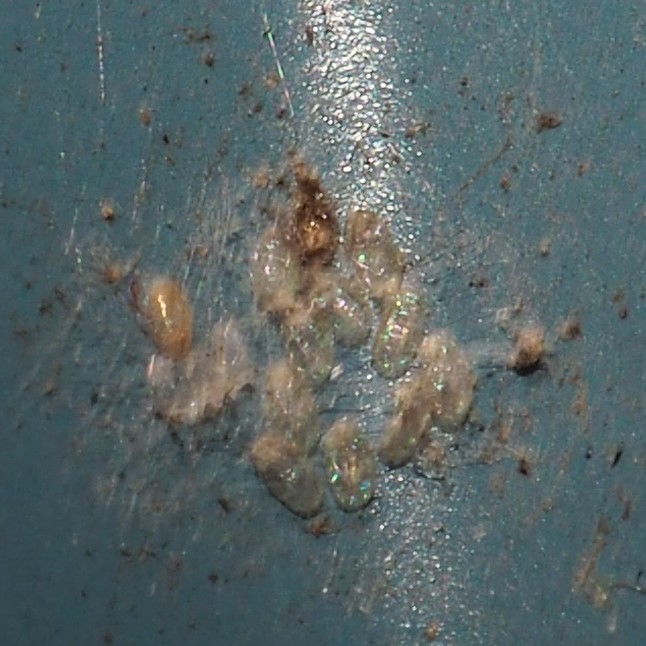
The cutest Barklouse Nymph that I have in my archive is this little fellow. But I thought you ought to see a little detail. In Picture 2, you see three little nymphs and three strange white things. I believe the white things are the empty skins from an earlier instar. Picture 3 may show an adult emerging from the last nymph instar (on October 29, 2019).
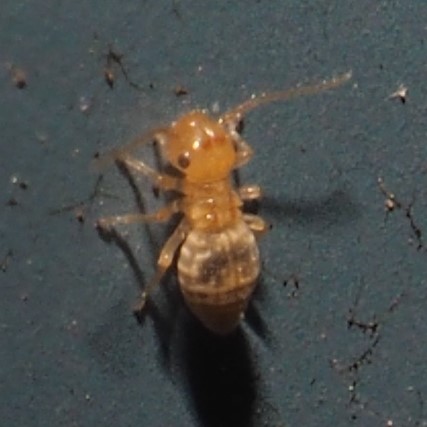
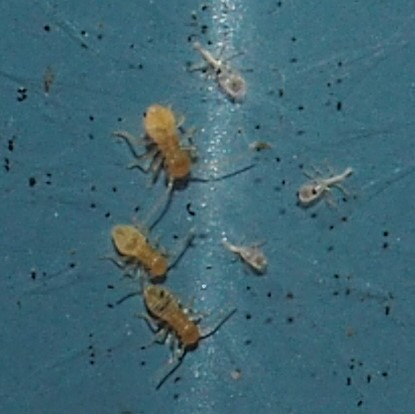

By the way, I'm planning and starting a website just for observations of barklice. Later I'll link it from here and also from the main menu.
This reddish bee I can't seem to get identified. It was going into and out of spaces between porch bricks. Third shows a Honey Bee and another unknown Bee in the Celadine Poppies.
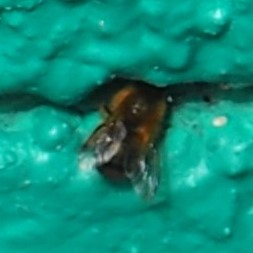

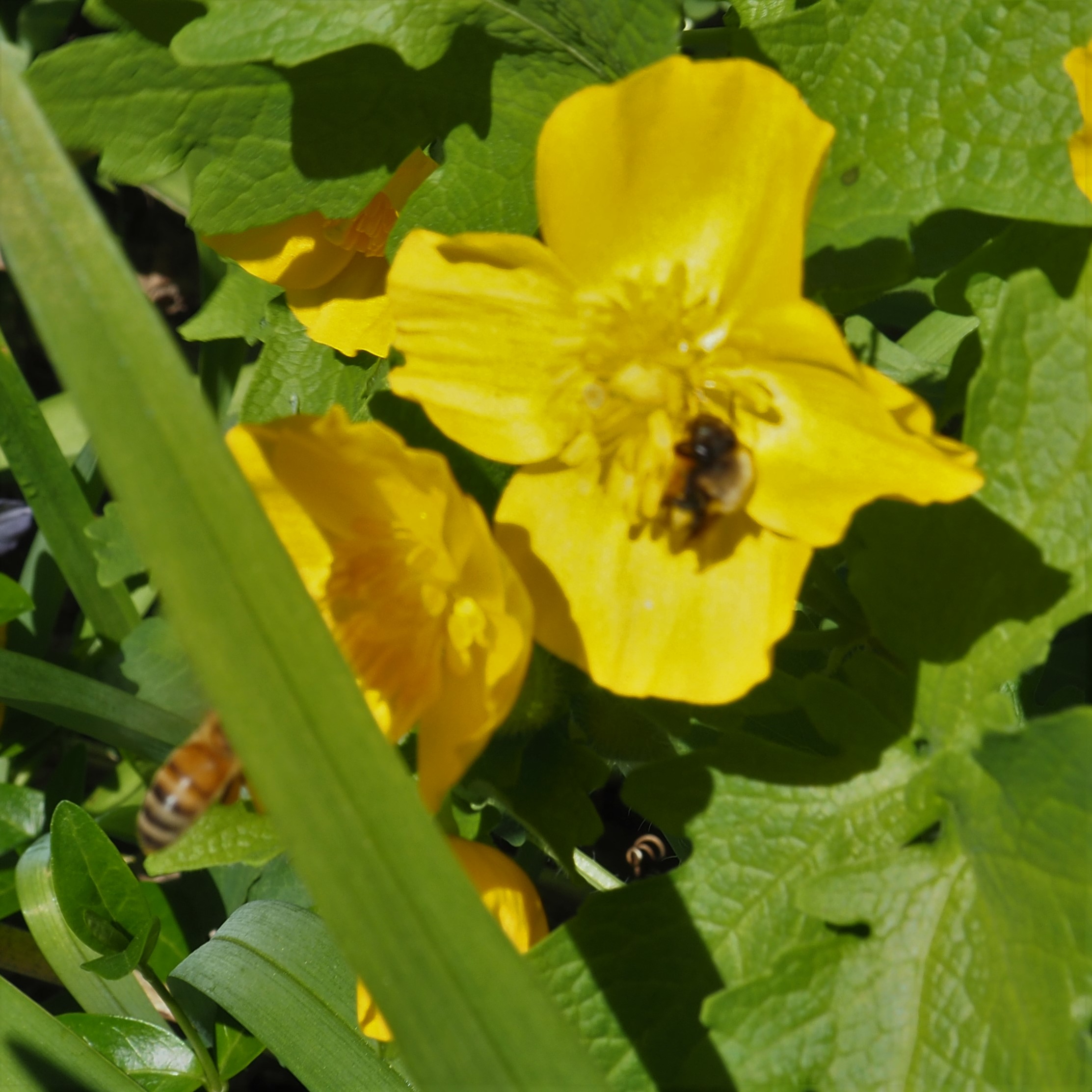
This first one is a Varied Carpet Beetle. Next two Weevils: one, a tiny darkish Weevil, the other, a Redbud Seed Weevil, or Bruchid.
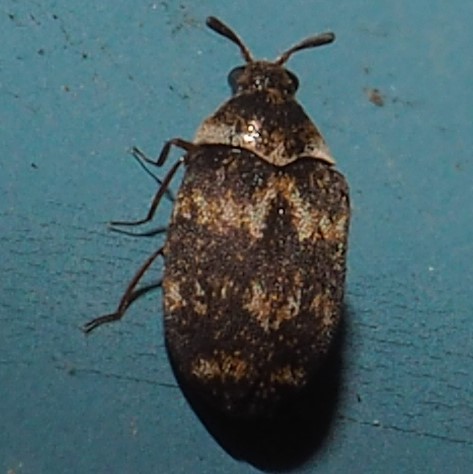
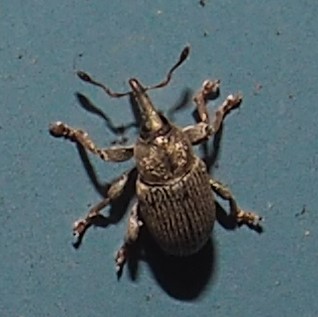
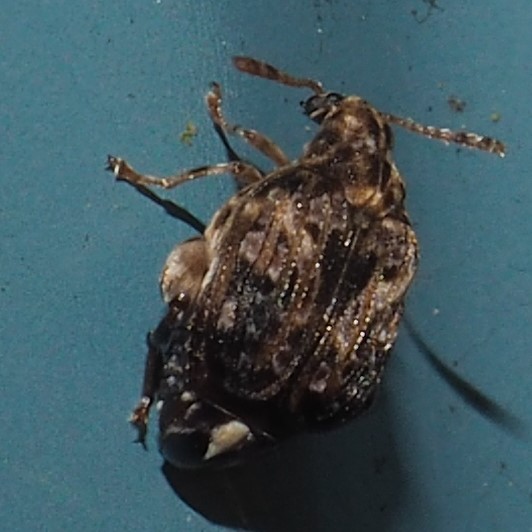
The Leafhoppers are coming along when the cold weather pulls back a bit.. Here is my favorite, Erasmoneura vulnerata, and the next two are some of the Eratoneura.
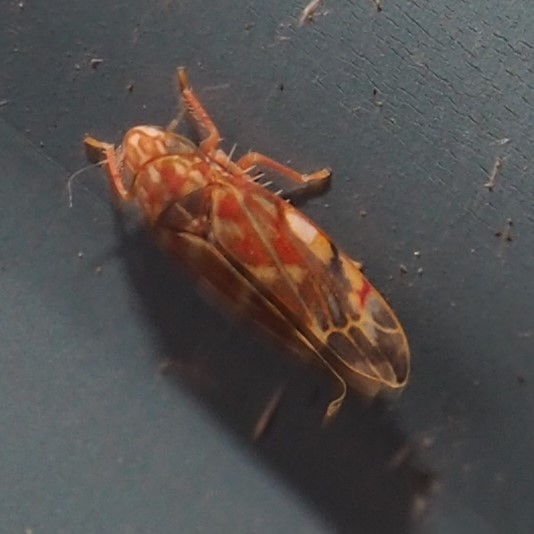
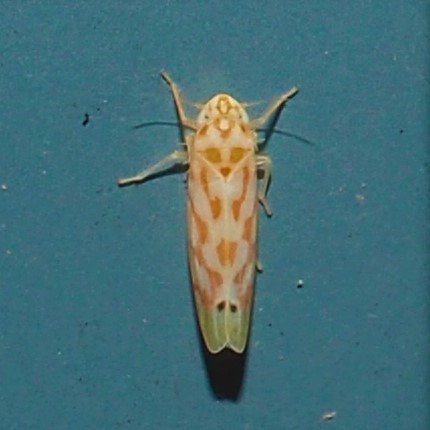
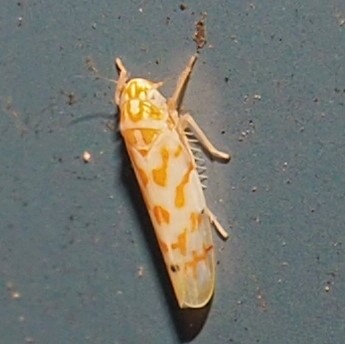
The Crane Flies came out of hiding while it was so warm. Look at those legs! Look at those colors! Both these flies were very large but the ones in pictures 2 and 3 were HUGE! One day the huge one sat on the Wall all day. Maybe they hunt at night?

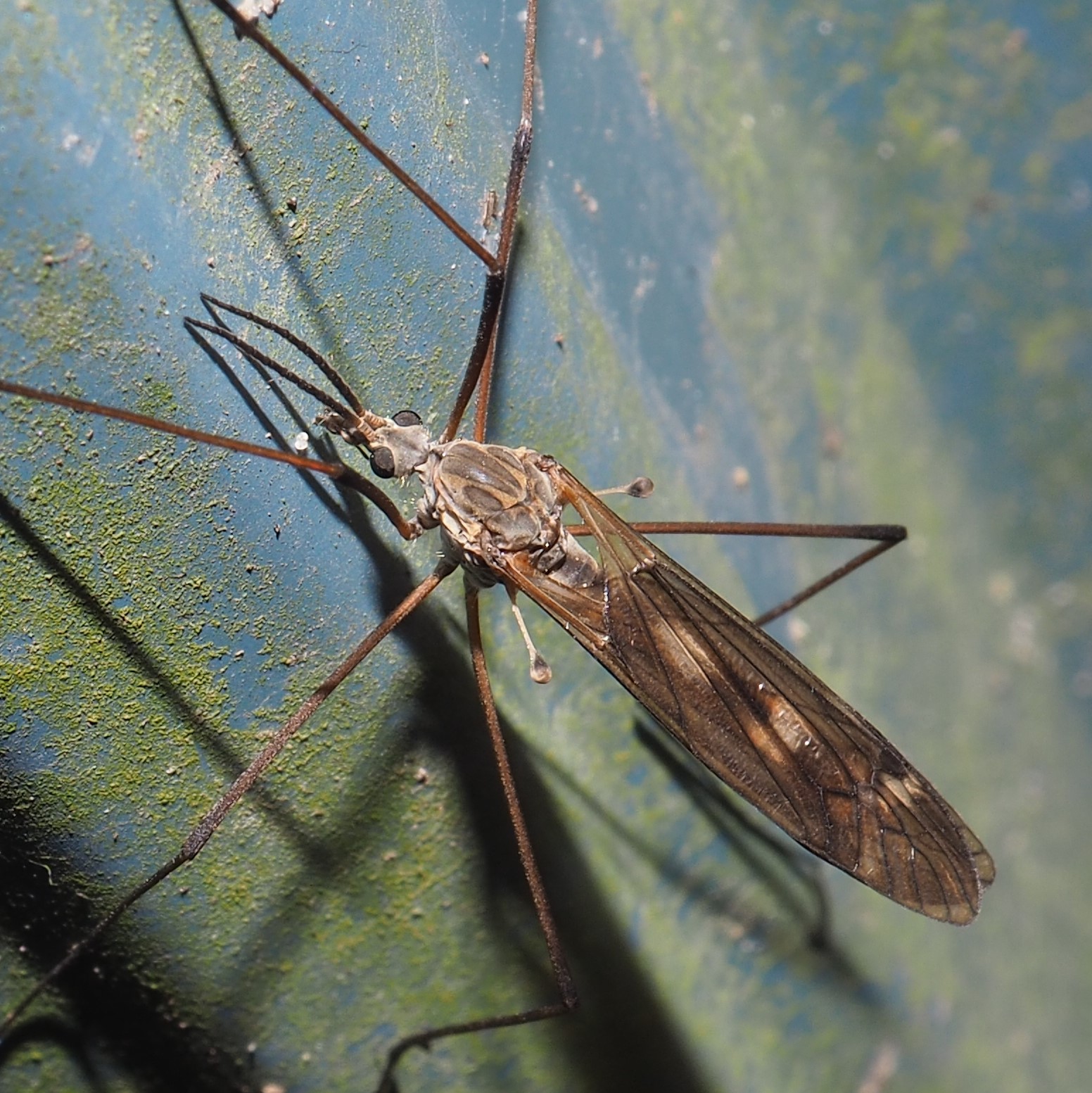
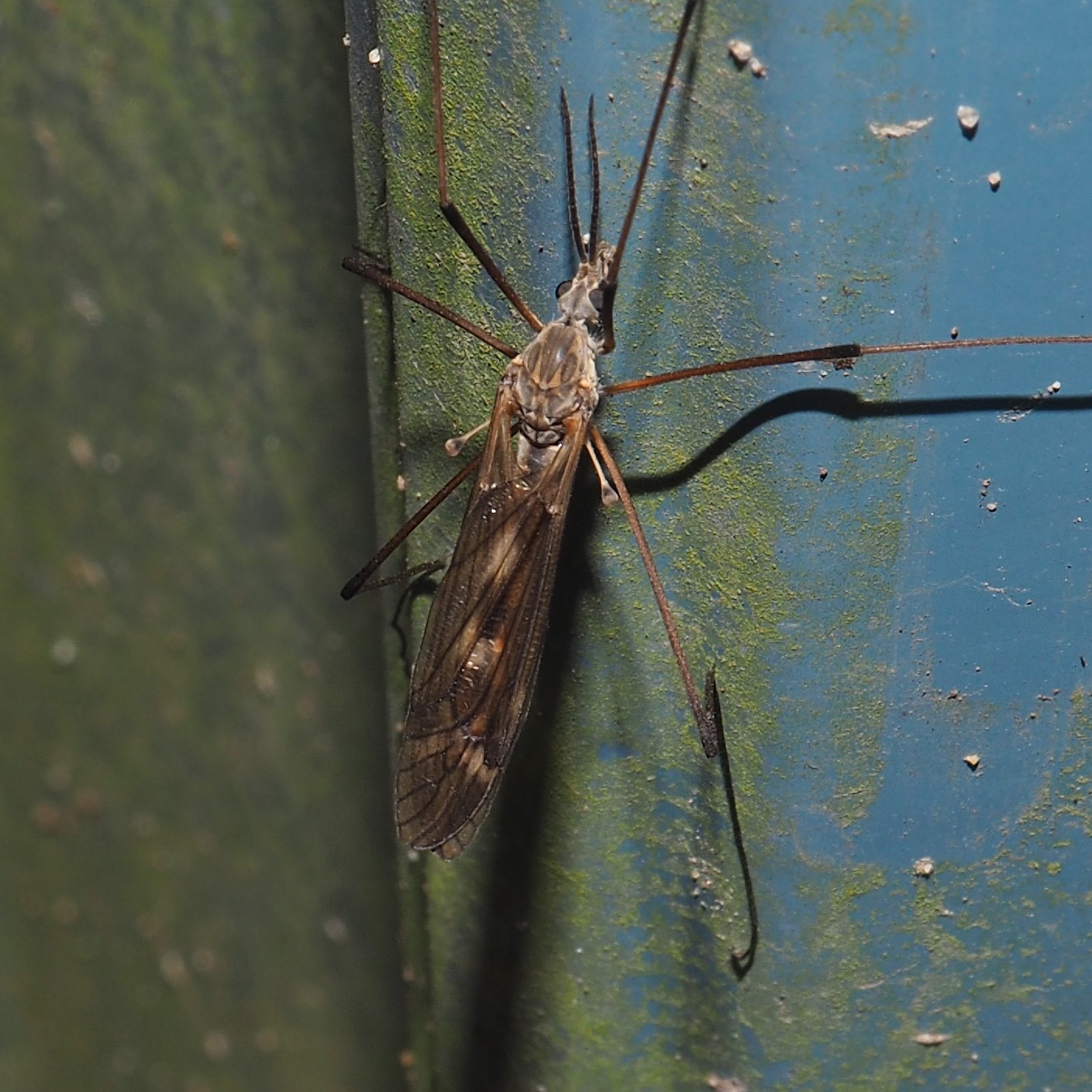
A lot of people see a Crane Fly and think "Mosquito!" But Crane Flies don't bite humans (as far as I know). This is the real thing. The ID app in iNat pulled up Aedini for a first guess and then said Flies. But it might still be related to the Aedes Mosquito, signaled by the white and black markings on the legs. Look at that big strong Rostrum on the front.
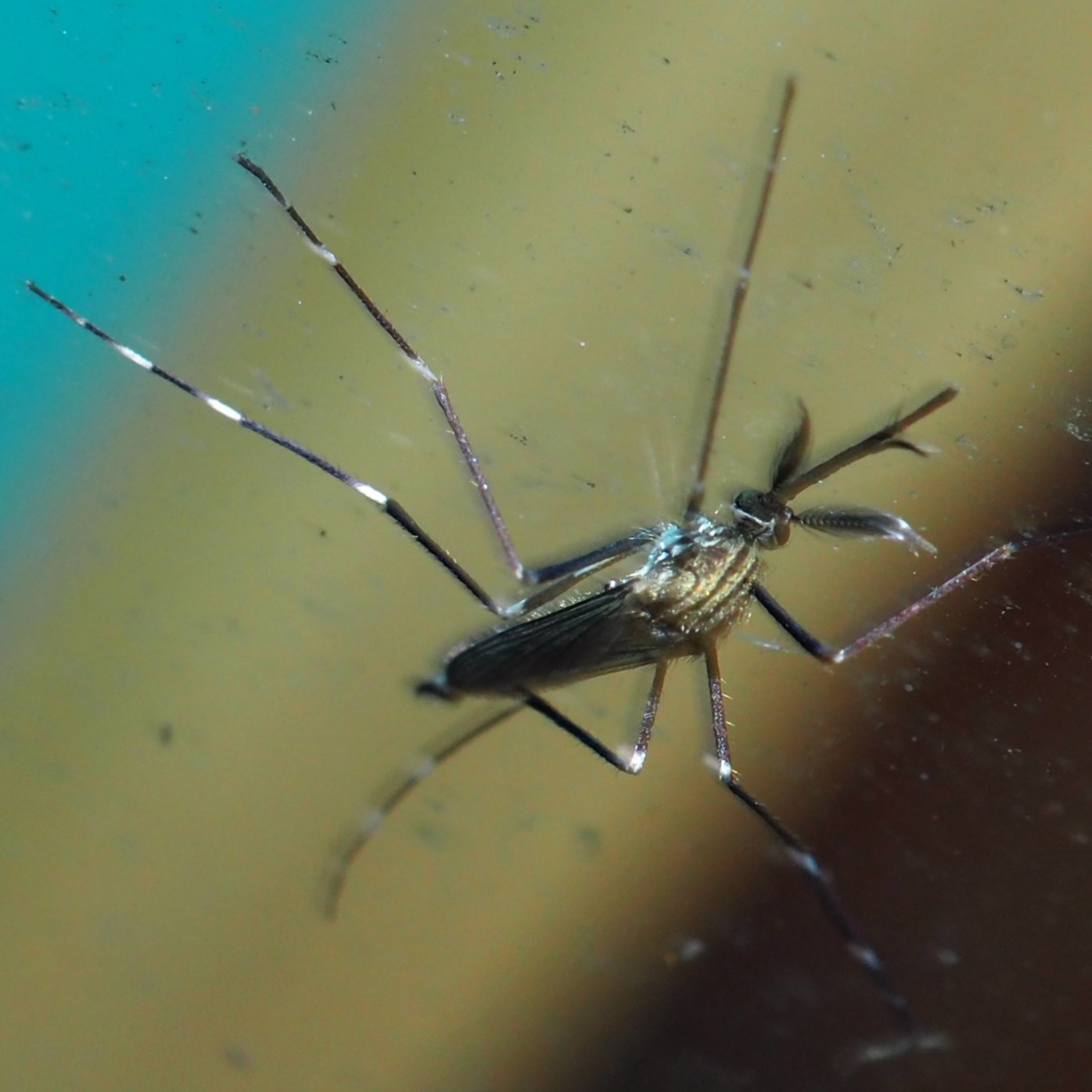
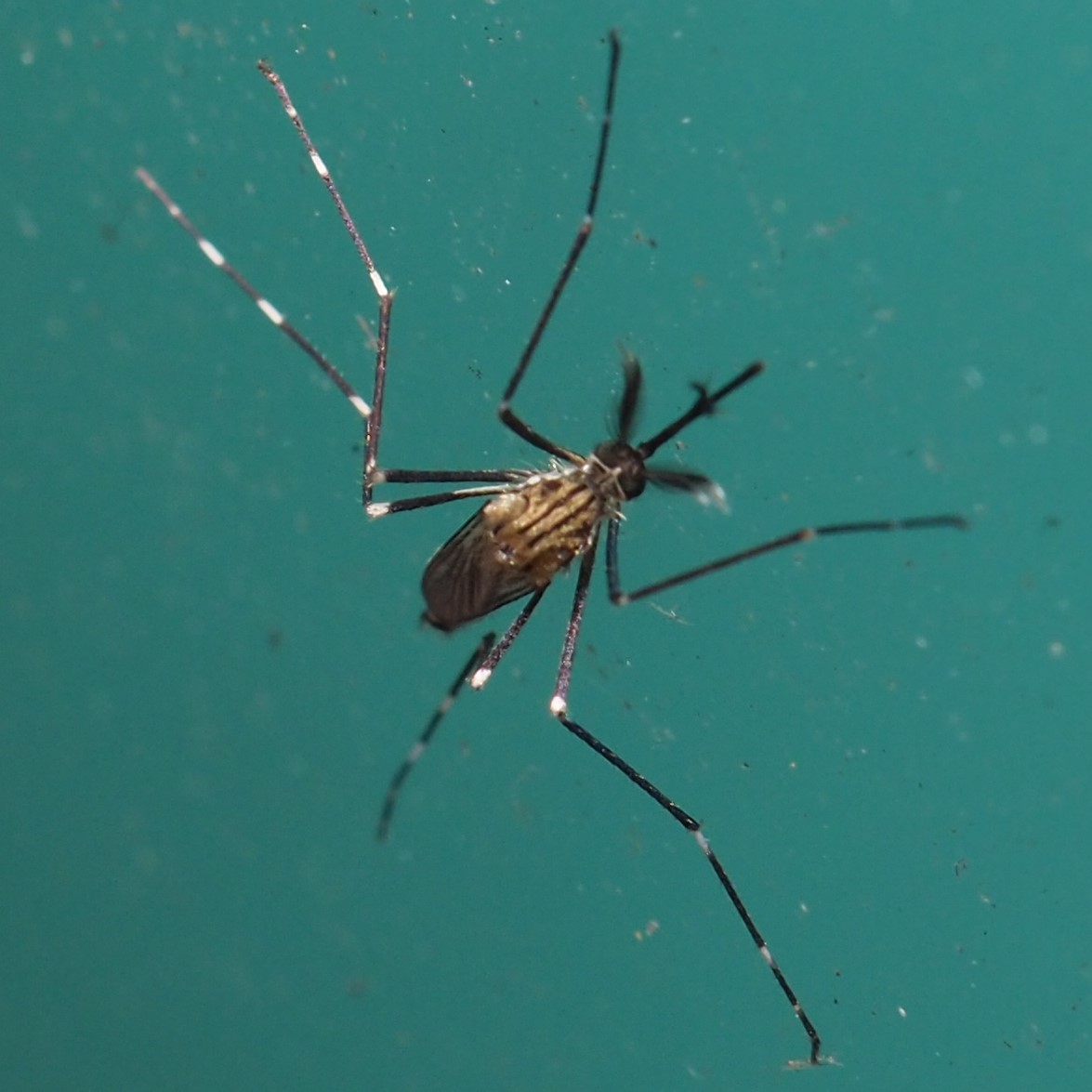
This fly may be a Wood Gnat. The tipoff is the wider almost oval wings if I had a straight dorsal shot.
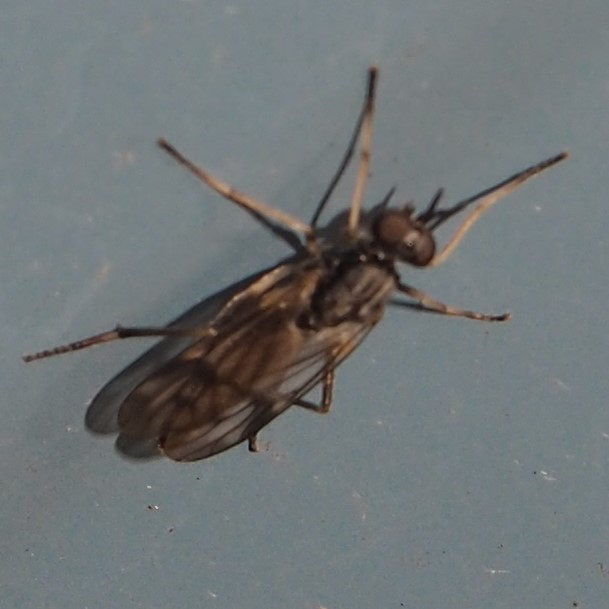
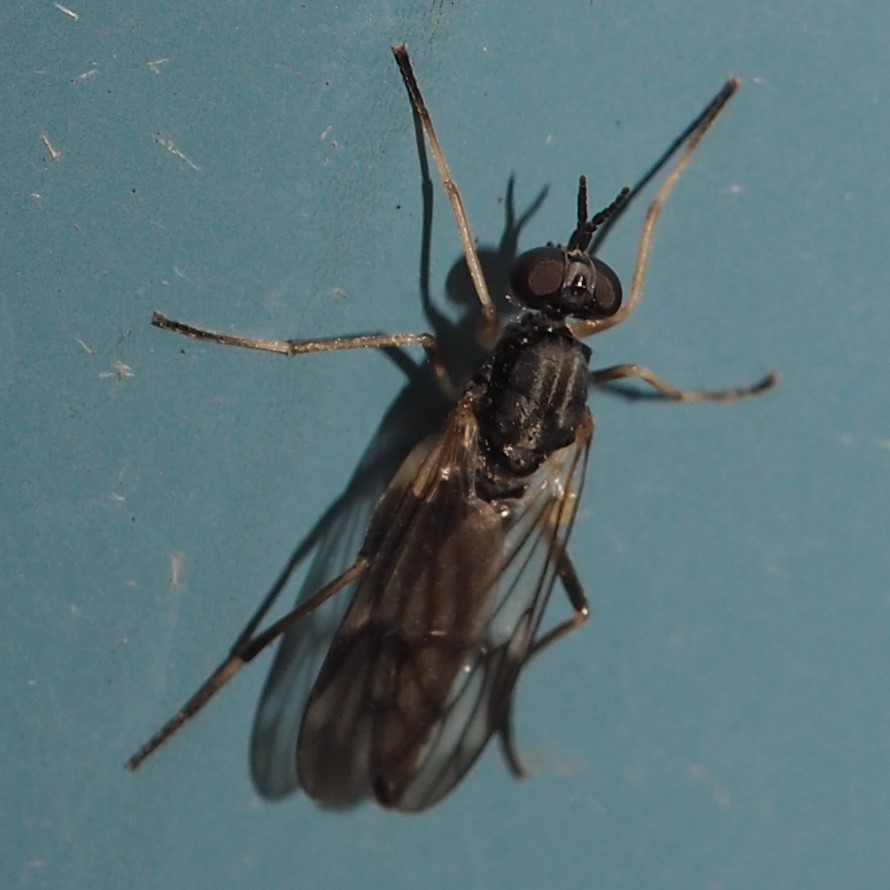
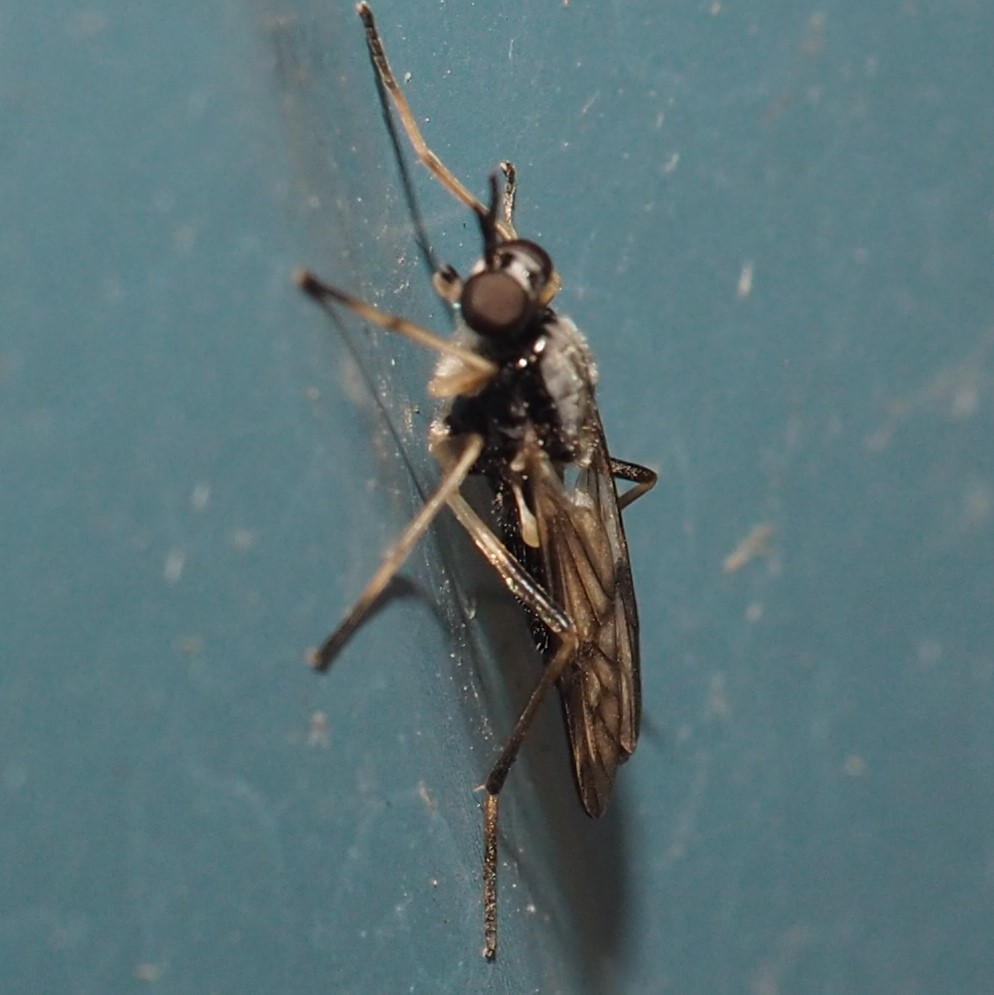
This lovely fly is one of my favorites even though it is so very tiny. Its pure red eyes attract your eyes. It's a Vinegar Fly, Chymomyza amoena.
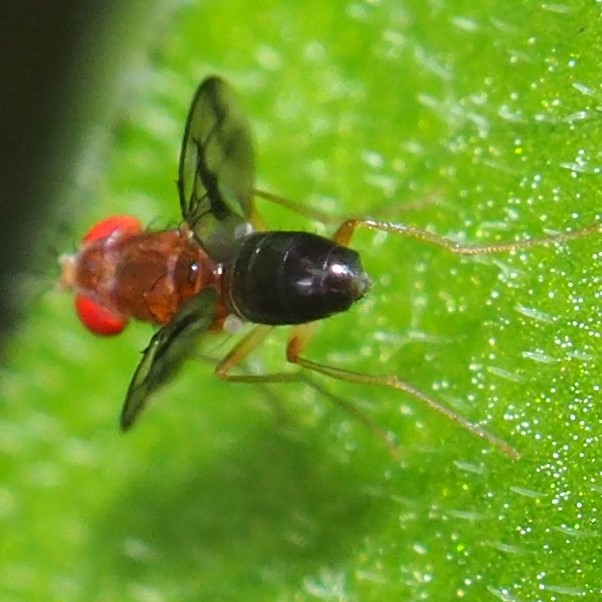
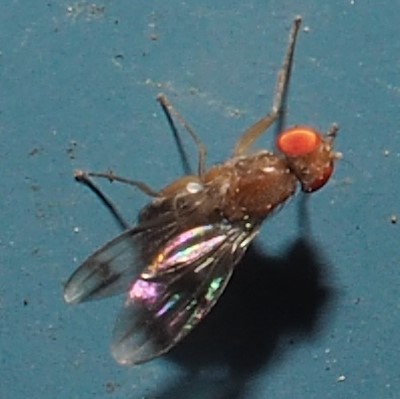
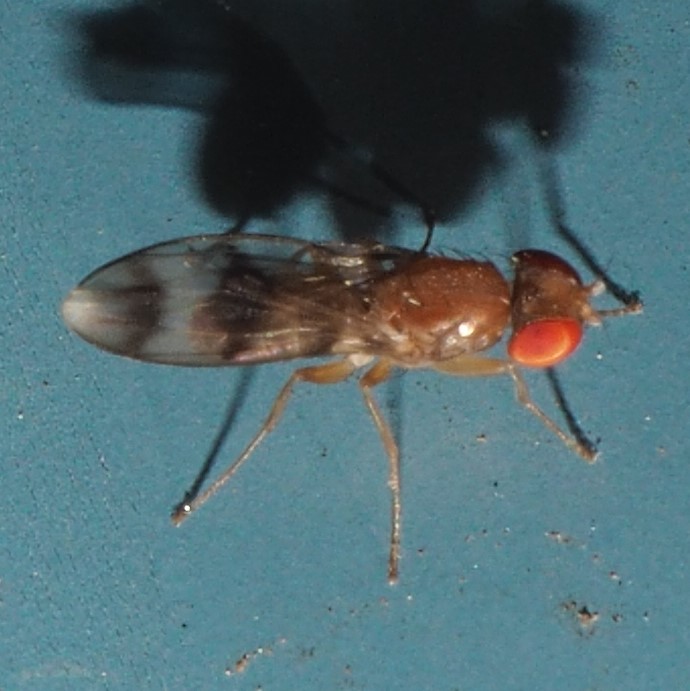
This first week in May seems to call the March Flies into action around here. The larger of these two is the female! The picture of the two mating is from April 24, 2016.
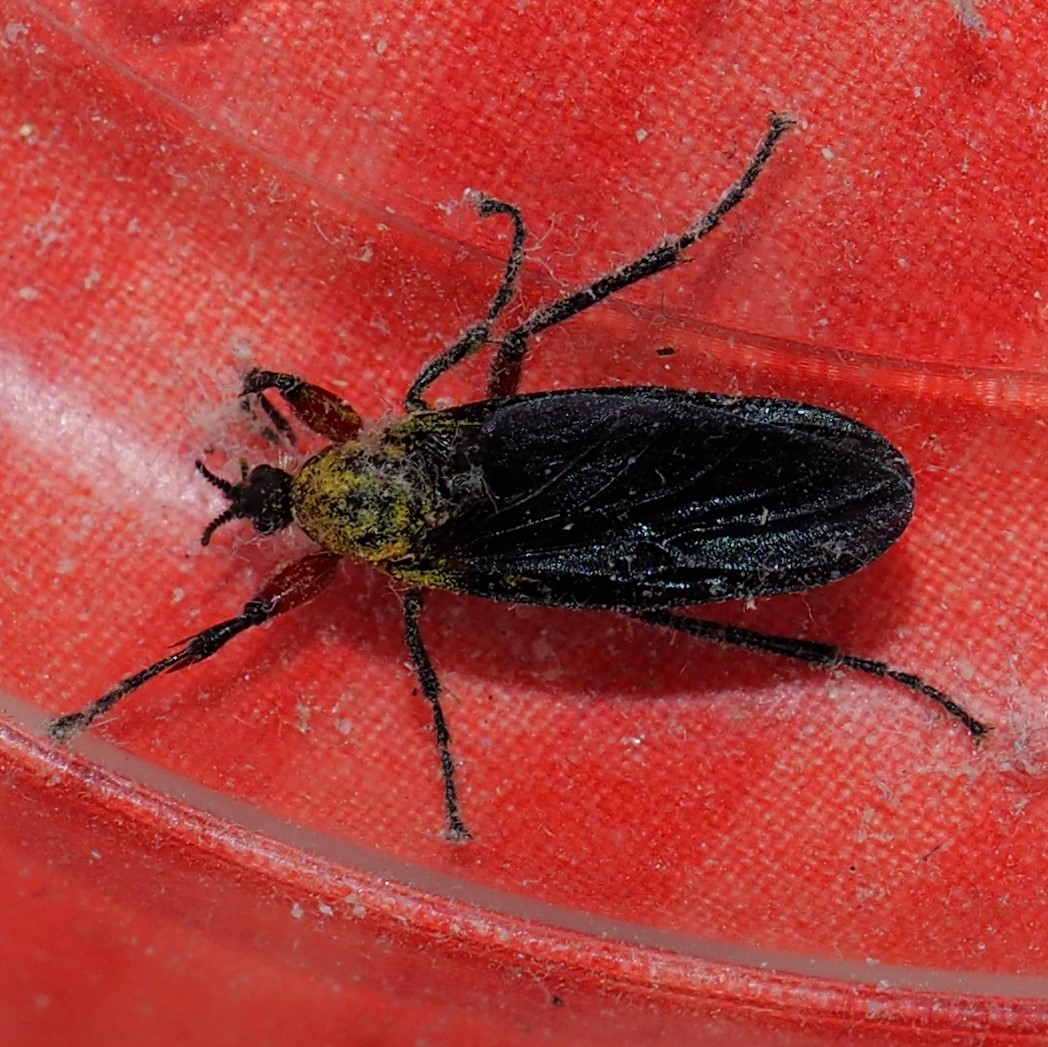
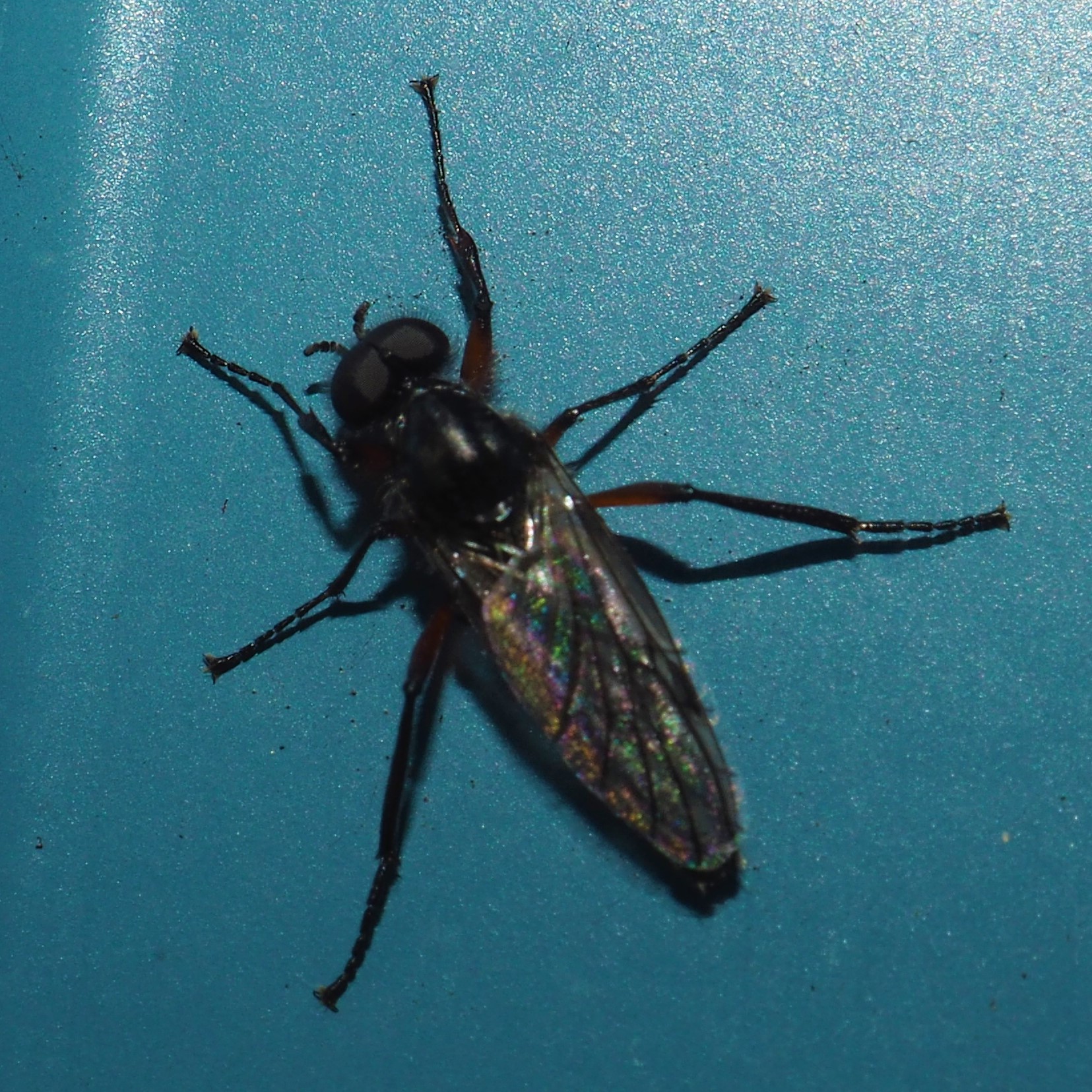
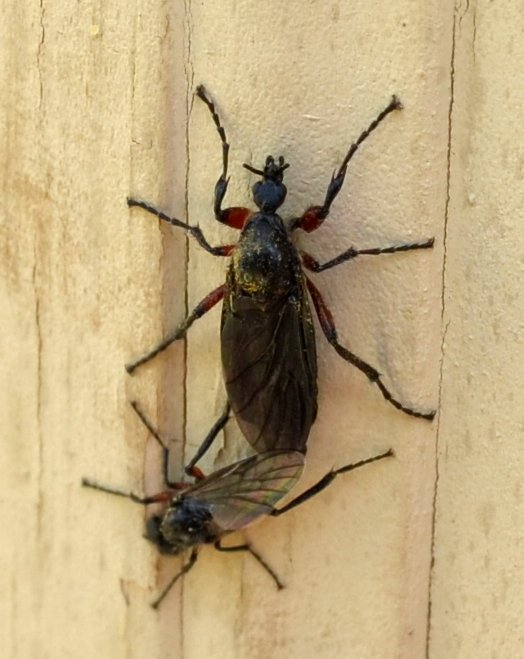
We get so many Fungus Gnats here. But picture 3 makes waiting worthwhile. Disclaimer: I'm not claiming all these flies are the same species, except for the two in picture 3.
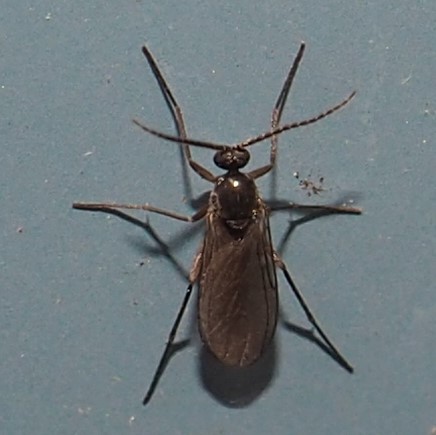

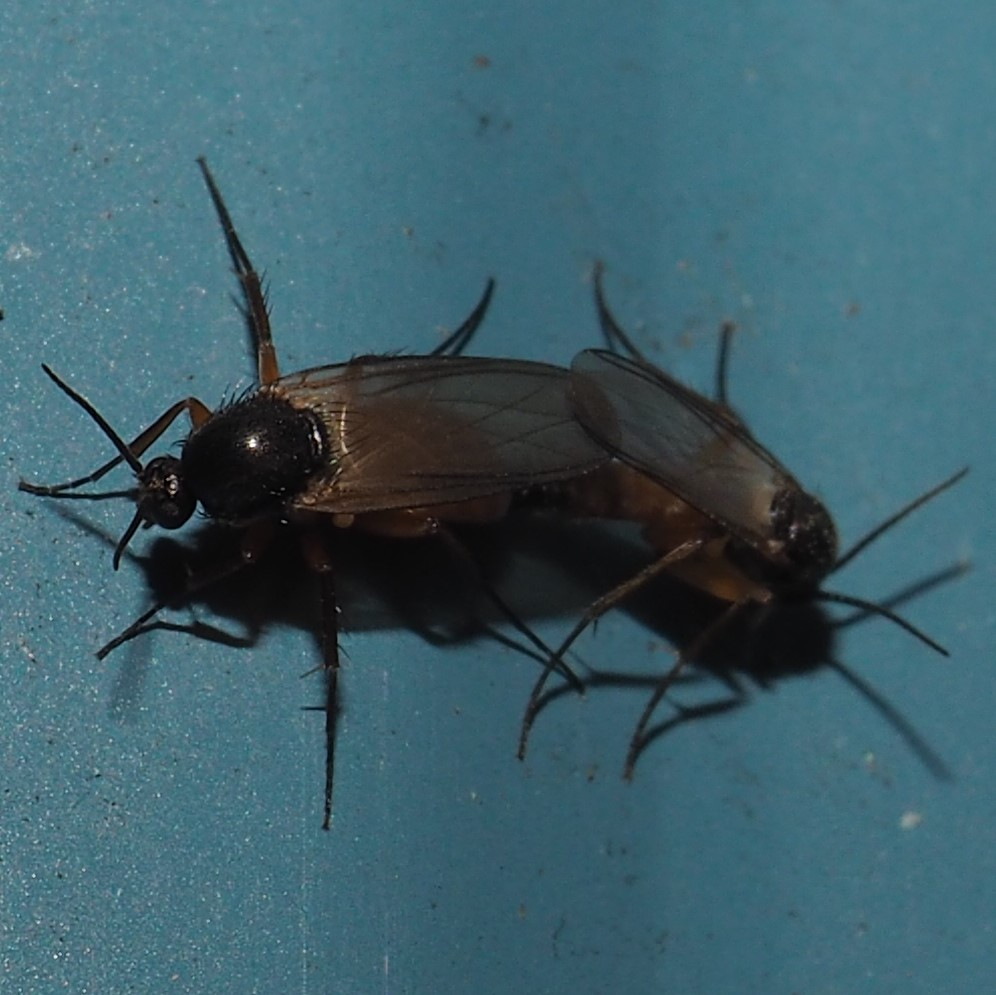
Flower Break! Here is the curtain call for all the tulips along the front sidewalk. Next is another view perpendicular to the first picture's.

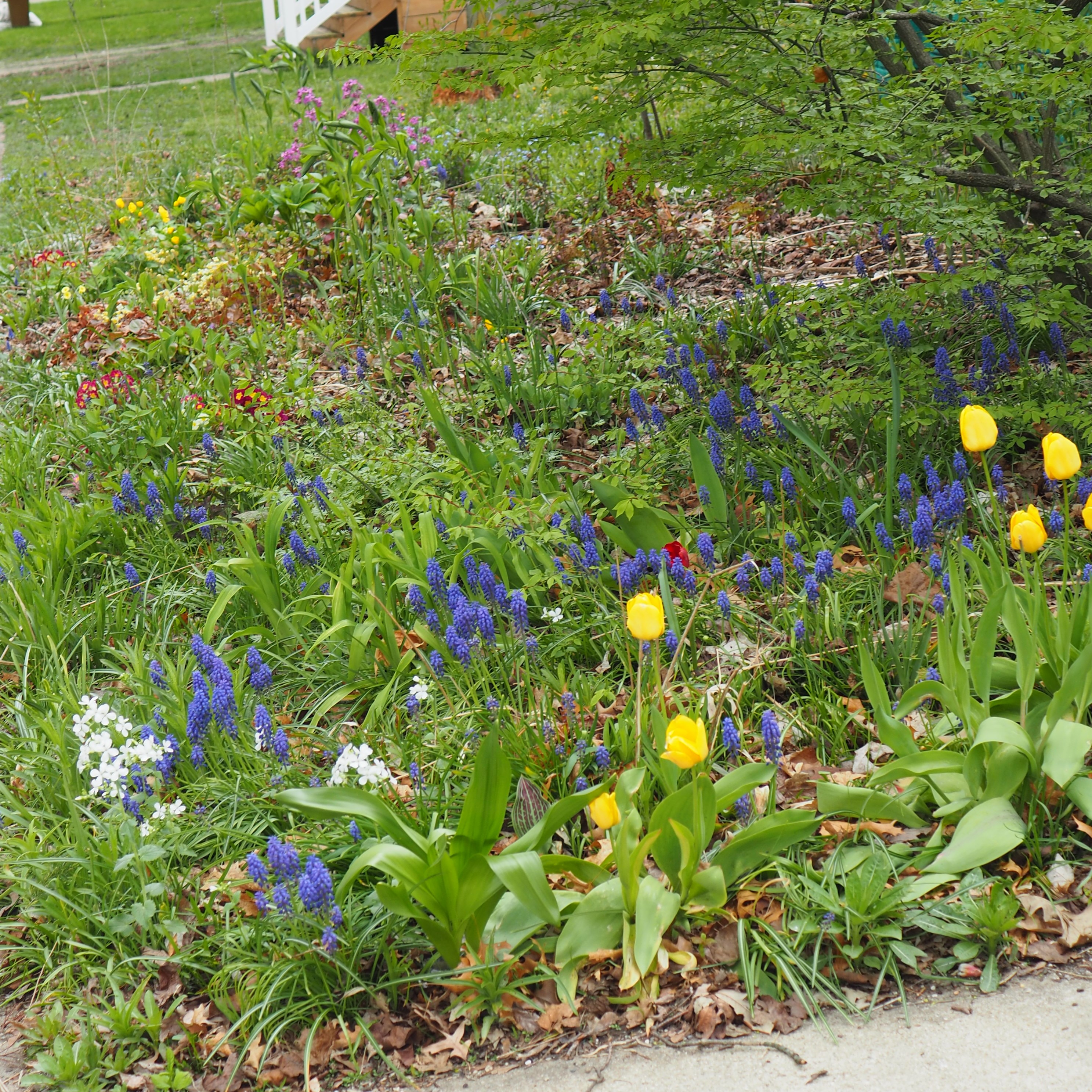
Just when you thought you had forgotten these beautiful blue blossoms from last year! Second is the Money Plant in its purple-pink formulation. Then we see the white form in amongst the Grape Hyacinths (late version). With respect to the Grape Hyacinths, I'm totally convinced that the later version with its firm cone-shaped clusters is a different species from the earlier with its looser clusters, especially as it ages. Maybe this is Muscari armeniacum.
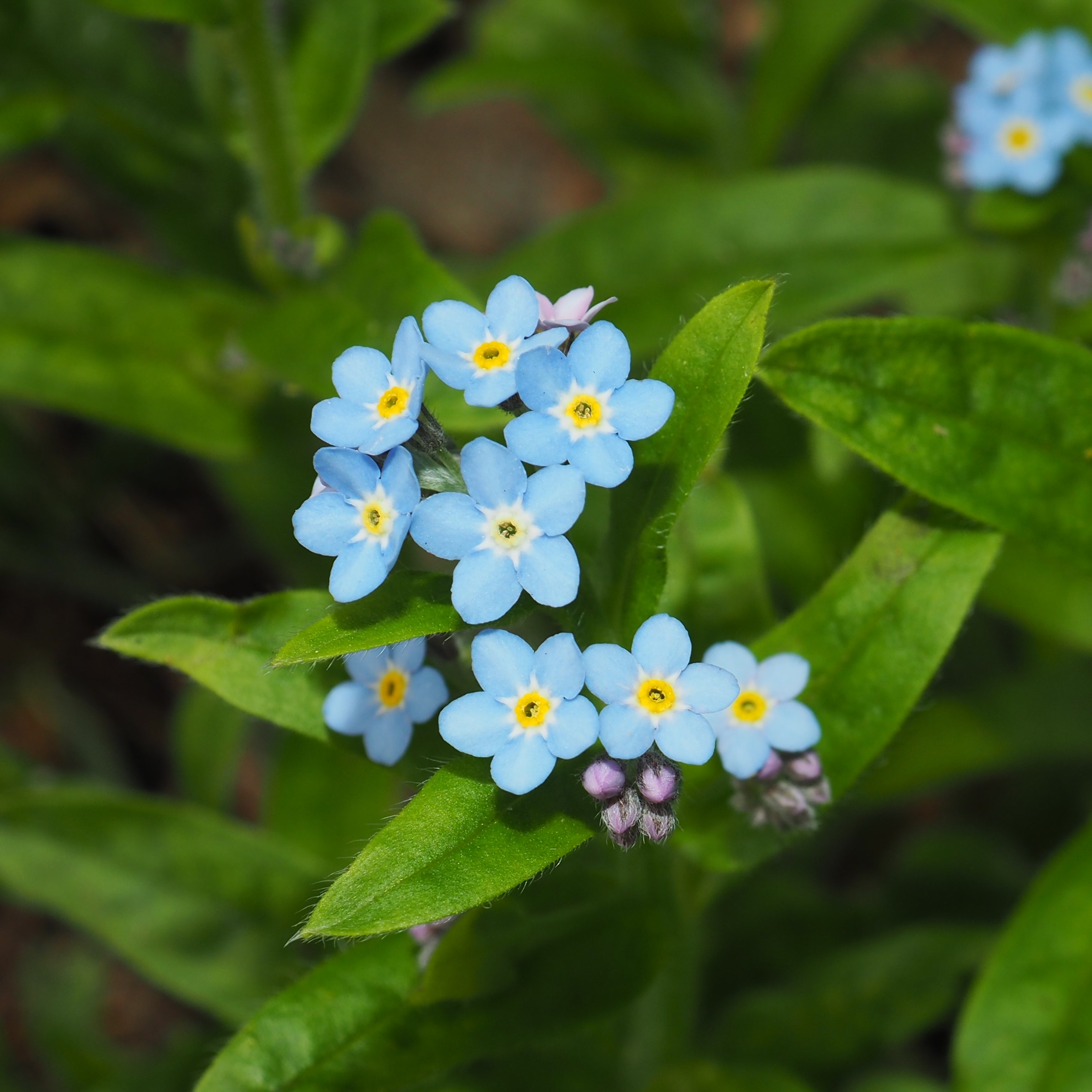
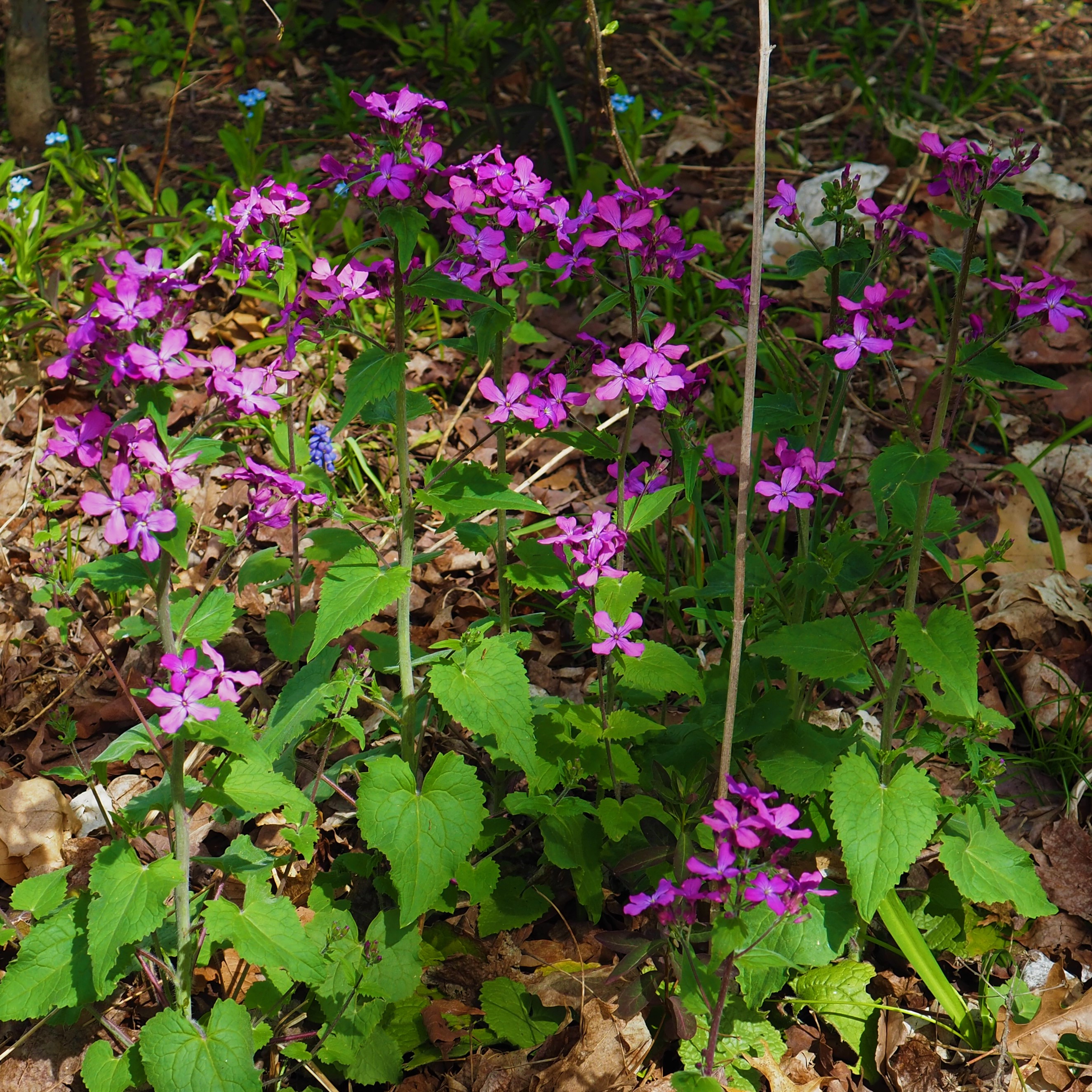

How about a quick look at Green Frogs? Since Froggy appeared on April 8, there have been some disruptions in the pond. For instance the story with the Toads, which I think I should introduce now, having given some hints of a sad event. Usually, shortly after Froggy, or whoever is the Green Frog who disappears from view in September or October and seems to sleep under the muck in the pond until April, reappears in said April, he is welcomed ecstatically. That happened on April 8 this year. What with cooler weather he then hid out somehow until May 2 (picture 2) and was out on April 3 (Picture 3). He does seem to be our old Froggy layover from last year. He at least seems to be a male, as far as the relative sizes of eye to eardrum go. Usually a male green frog's tympanum is a bit bigger than the orbit of his eye. It's early in the spring so who knows what happens while they hibernate?
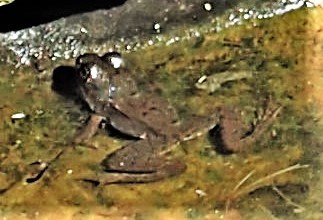
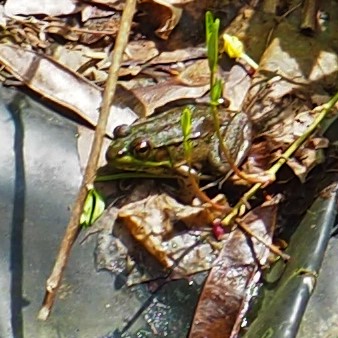
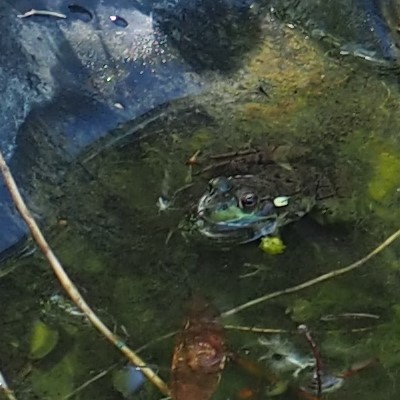
In mid-afternoon, I began to hear a loud trilling. It's May and not too soon for the American Toads in the neighborhood to have their first in-gathering in which the males sing to attract the females. Fairly soon there were two pairs mating, and two extra males singing frantically for mates, who didn't seem to appear. So the afternoon progressed.
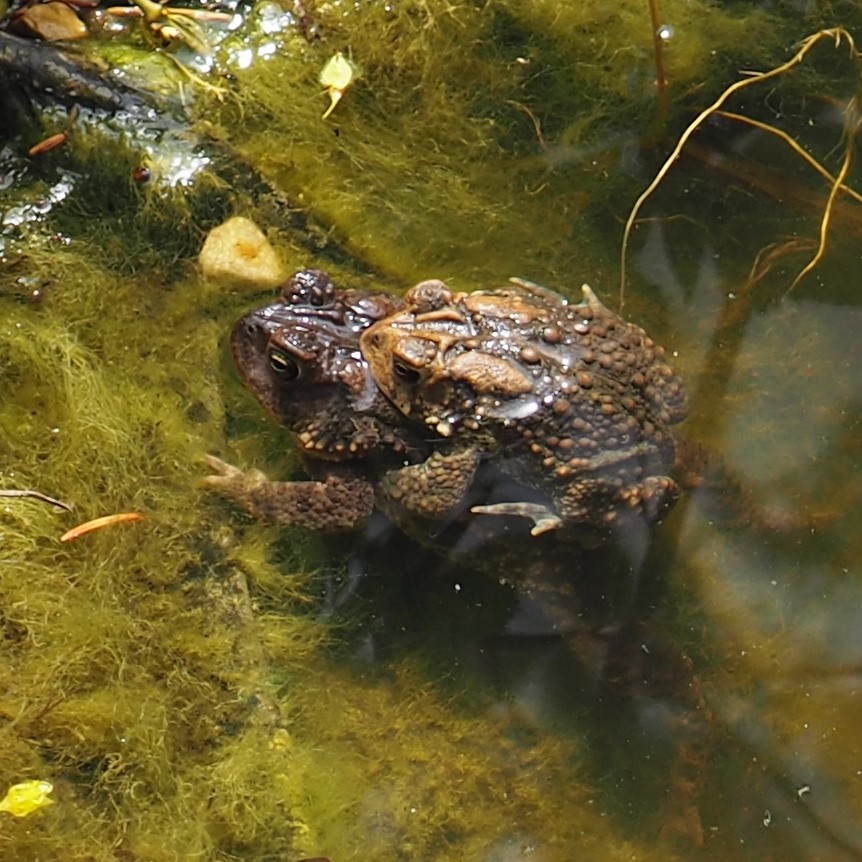
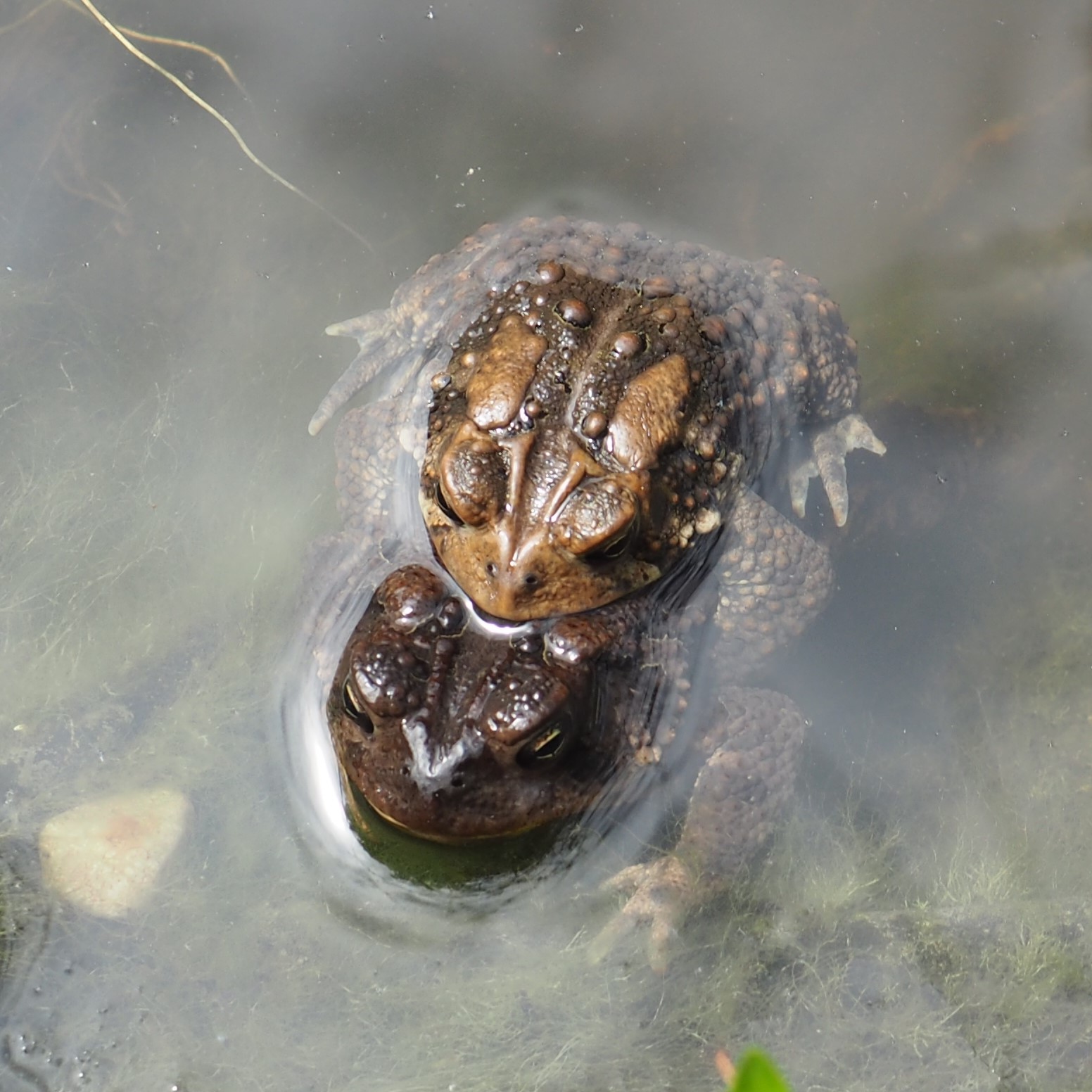

It began to cool off but the trilling and mating went on till my bedtime. In the morning it was cold again, and there was no action in the pond. Worse, a large female was hunkering down near the steps to the deck. Later I saw a male on the deck itself. Still later I found what I feared I'd find - scraps of toad flesh in the pond. There's only one thing it could have been. I had spent one night outside watching for a visit from a raccoon, a true danger to toads. Looking at the female's face, she seemed to have sustained some kind of injury as there was a bit of redness near her eyes. Although I watched and listened for signs or singing of toads, the trysts seem to have been over. On the 6th, I finally found some strands of floating fluffy greenish stuff - curled around and around, which resembled the strands of eggs produced by the females and fertilized by the males during the mating process. On the next day the strands were no longer floating. We will have to wait for a couple of days to see if the strands clear up to show the egg & gel strings to prove that there was promise of some tadpoles for this time.
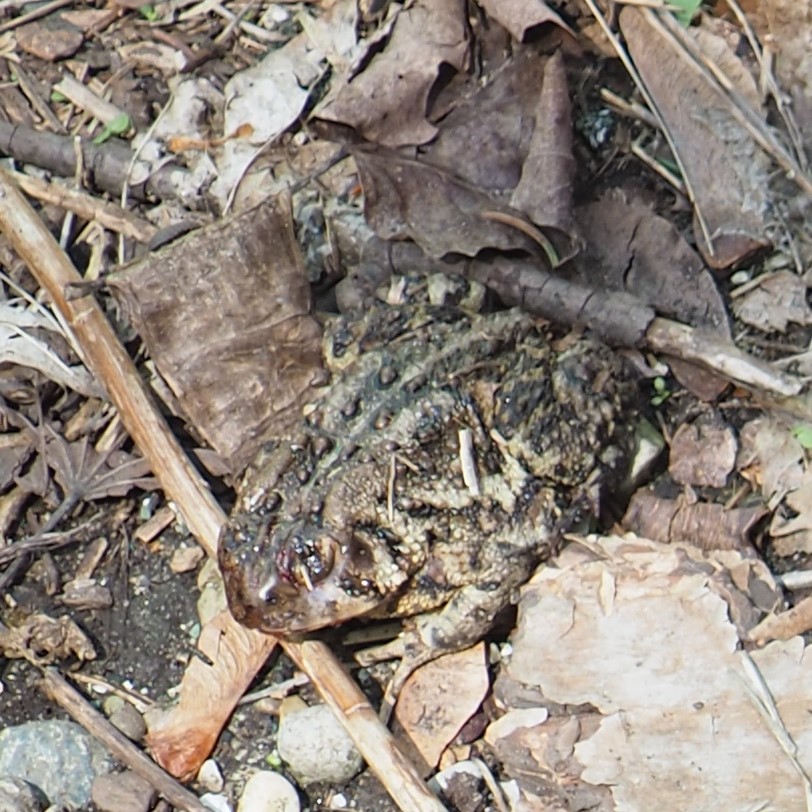
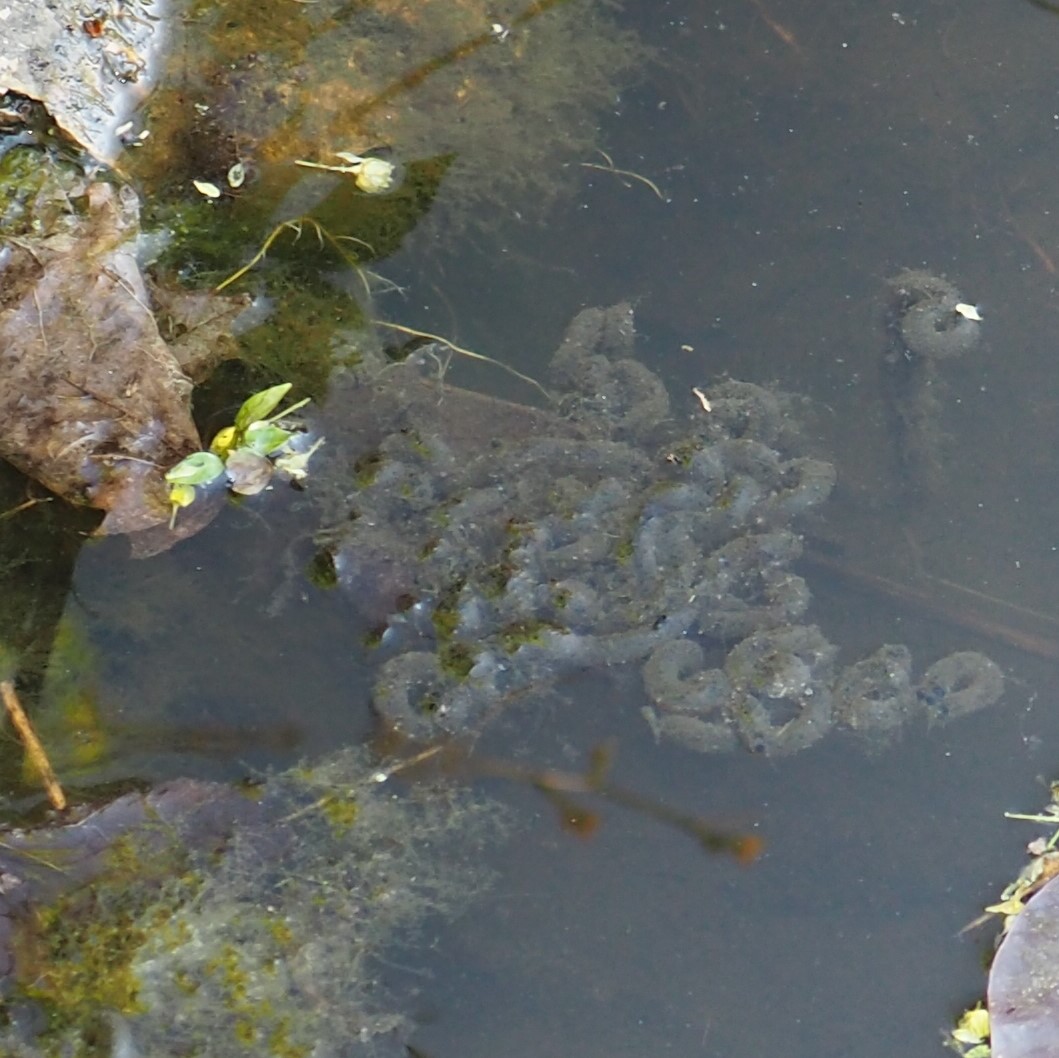
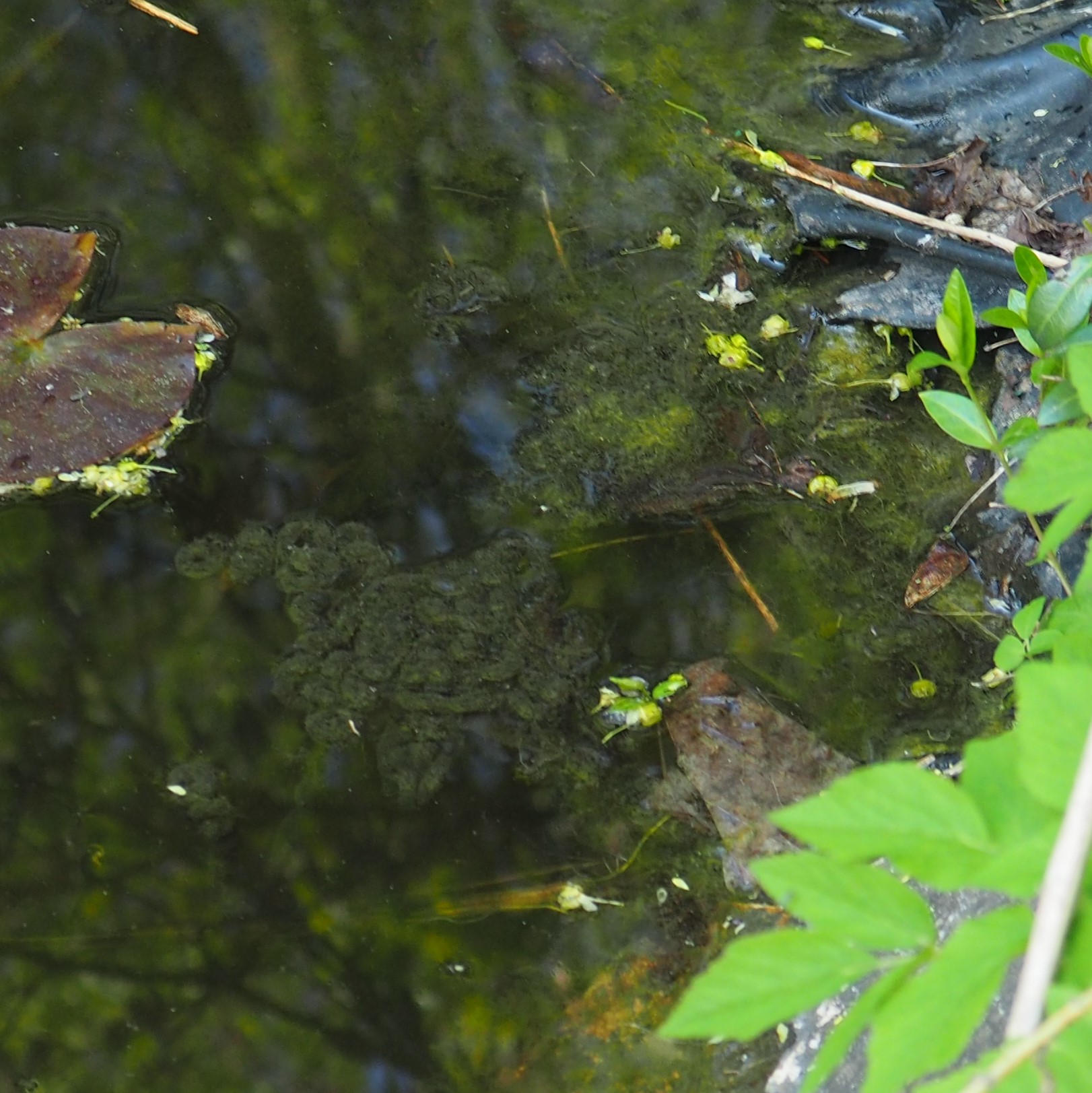
As usual, Froggy has been somewhat less available after the action in the pond. On May 7th this small frog appeared at the southeast corner of the pond, his usual seat. It seems a bit smaller than Froggy was the week before. I'm wondering if Froggy was frightened off and someone pulled a switcheroo with this possibly younger frog. We will keep our eyes open. So cross those fingers, and hold those thumbs and whatever else you can do that's really effective in solving this case.
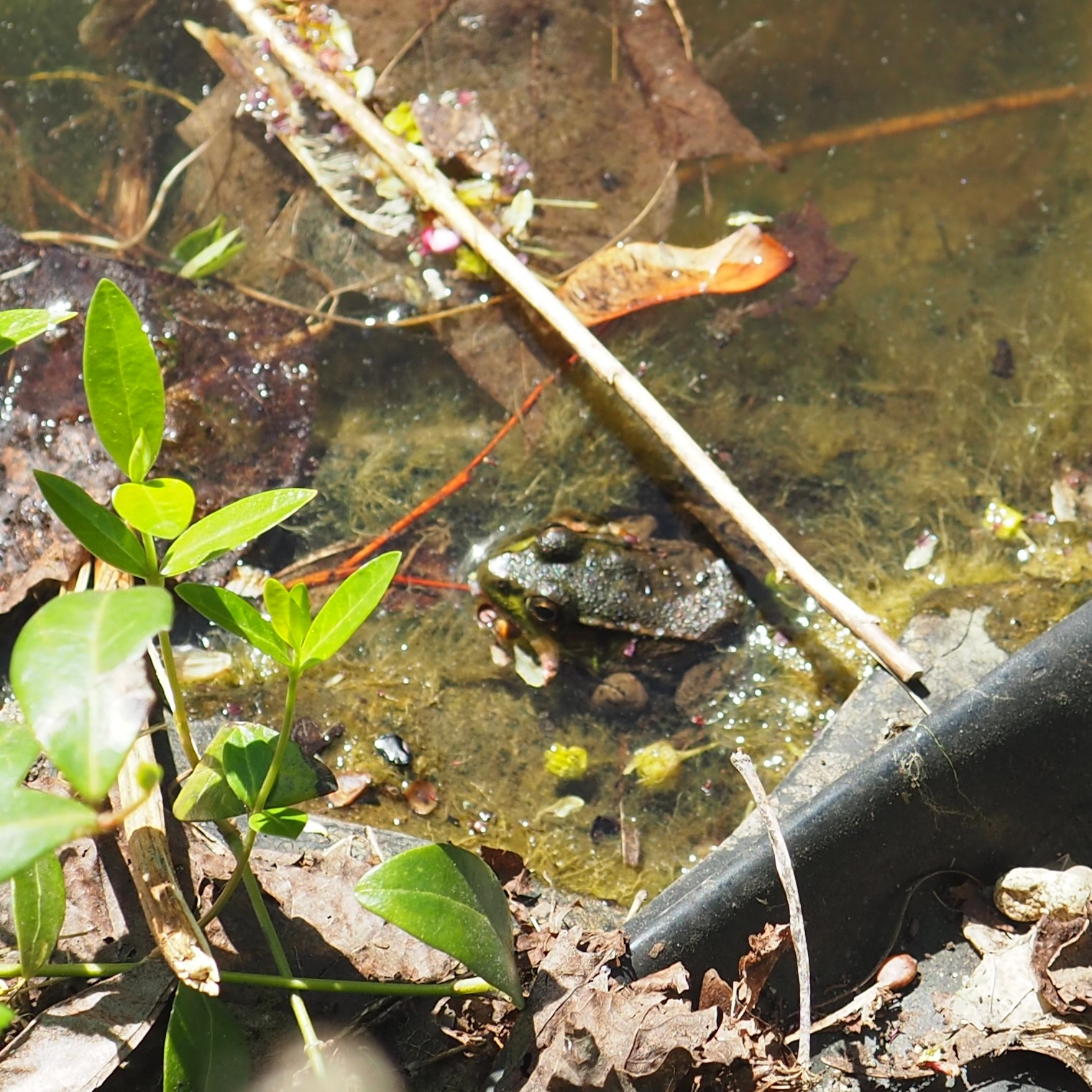
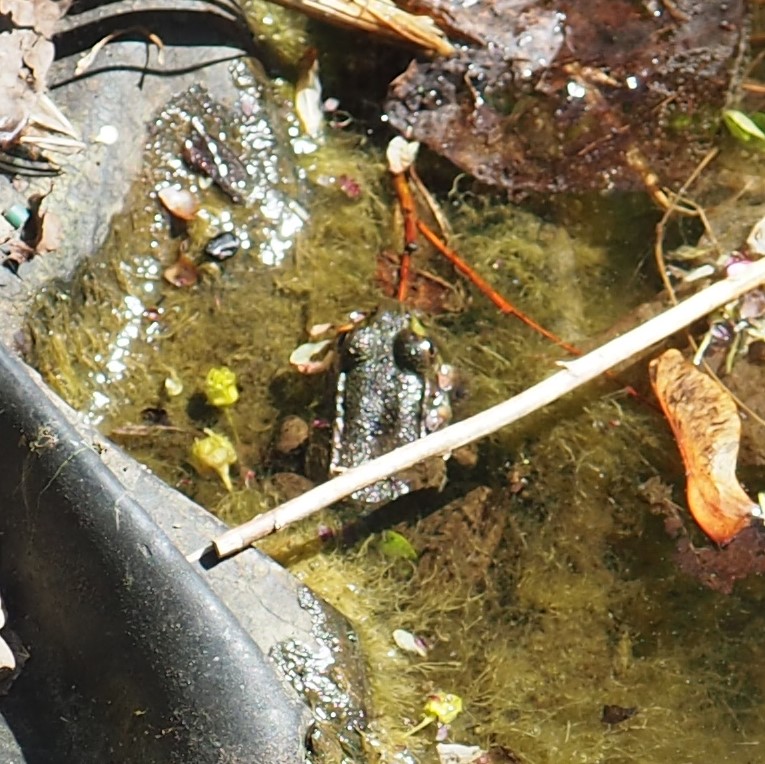
More flowers! The Japonica has been in full bloom for a couple of weeks now. I hope that the Orioles have enjoyed it. It is not in a place where I can watch it from inside. Oh, but my friend Nancy Sprandel did have an Oriole on her orange bird-feeder. Picture 3 is another of Nancy's pictures - this time, a Rose-breasted Grosbeak. I've never seen the Grosbeak here in Albion, and only once spotted the Oriole on the Japonica.

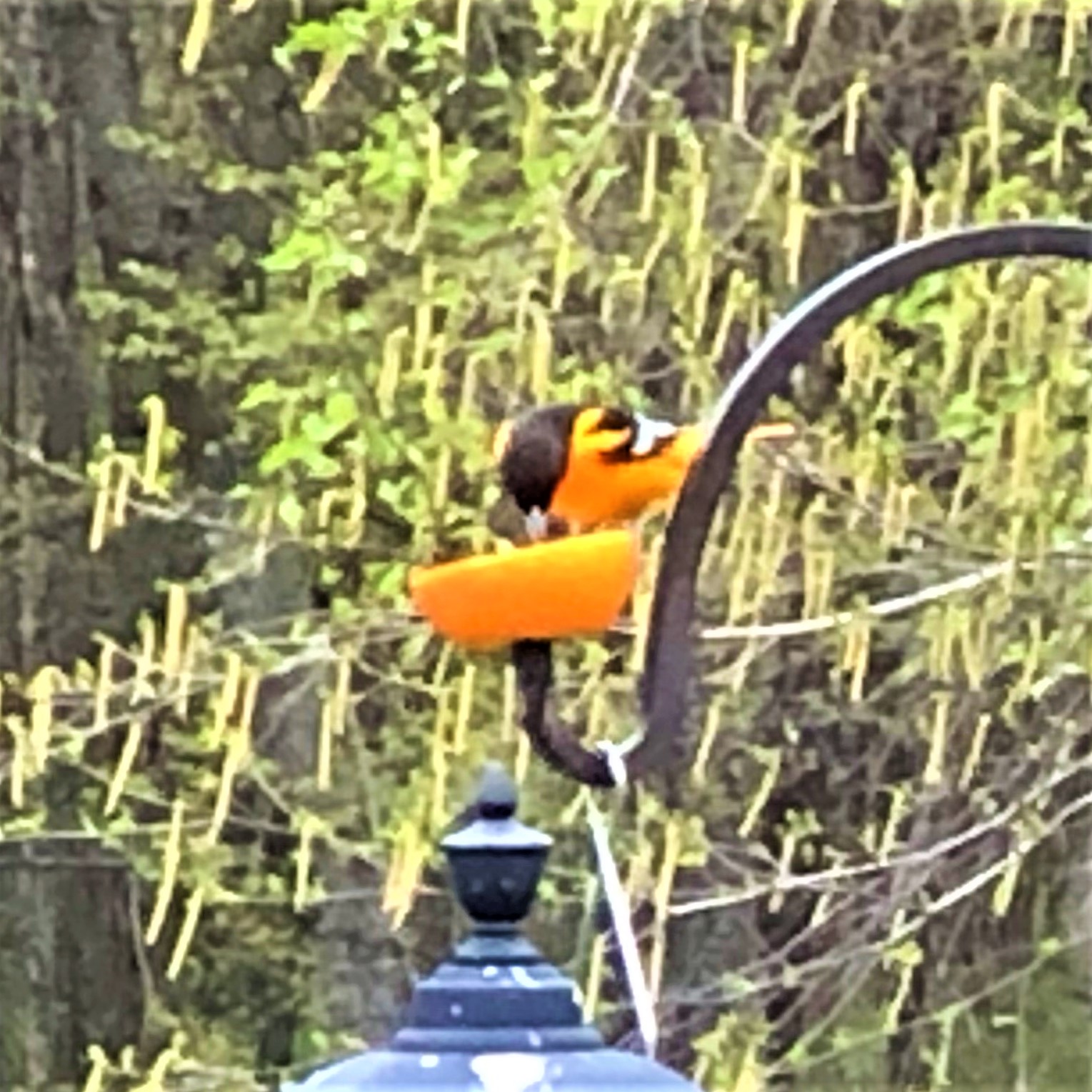
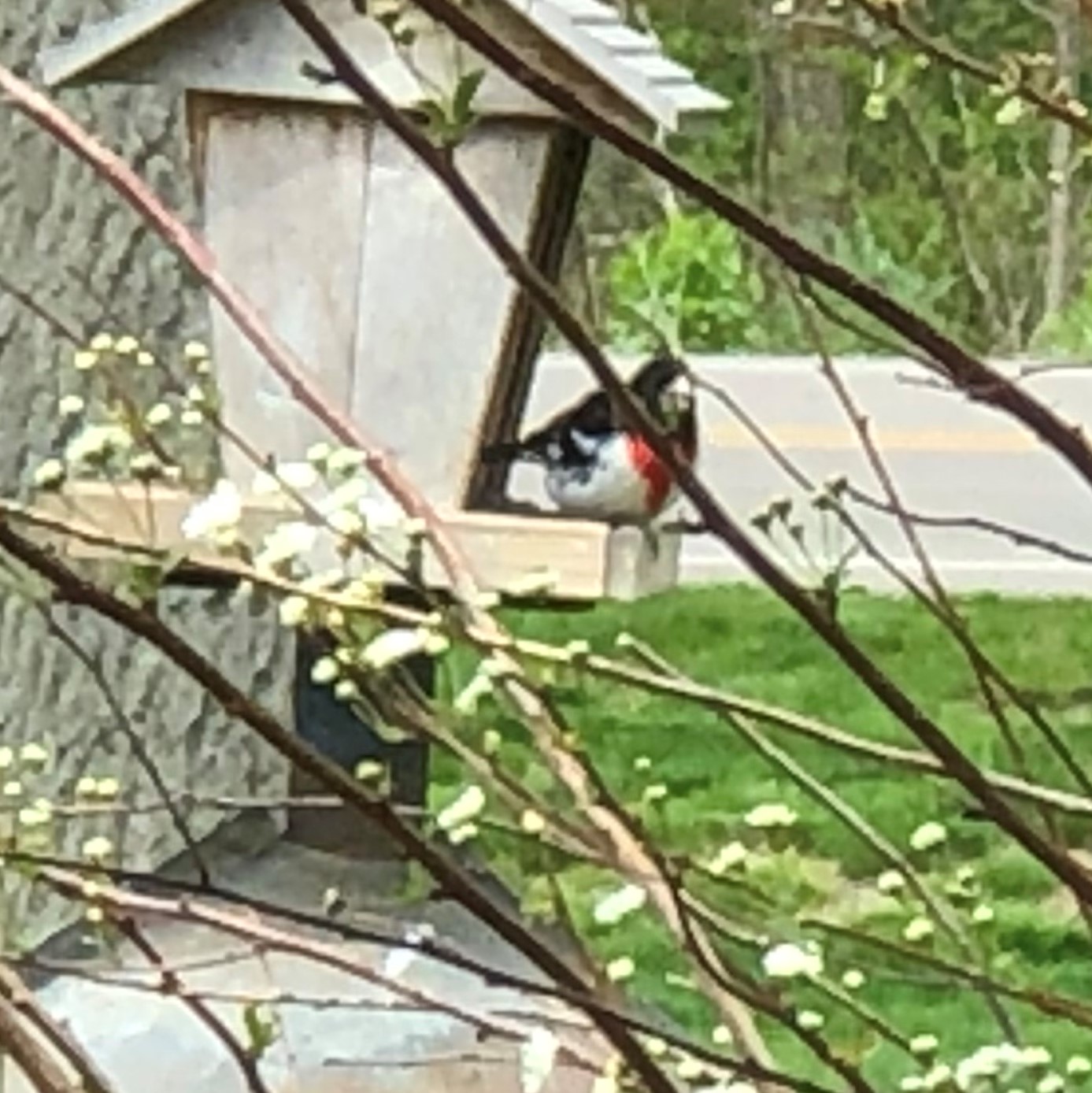
The Seelys' young Weeping Cherry tree is still just lovely. And my primroses have outdone themselves. Some will be of sharing size when it is warmer.

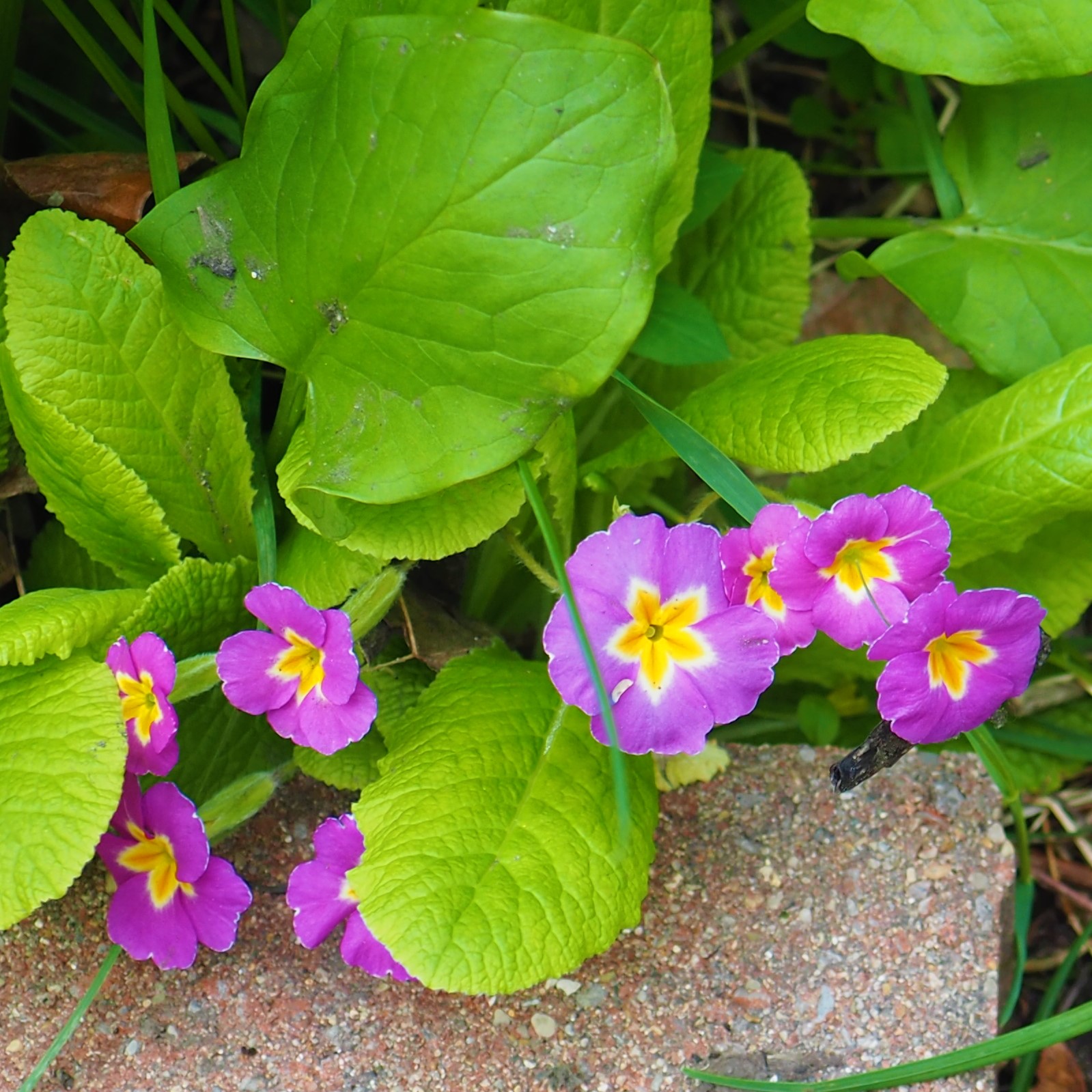
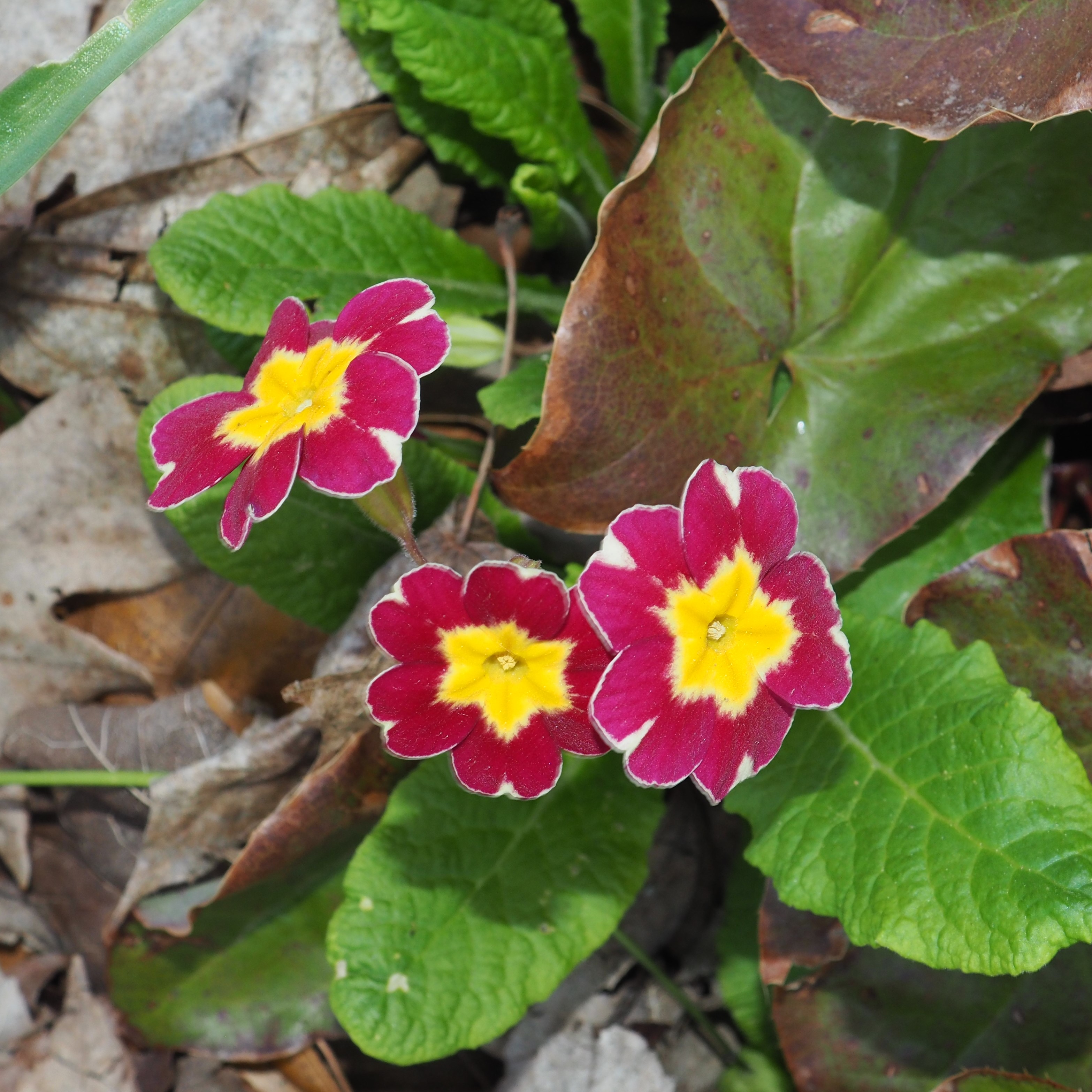
This first one was from Tim Lincoln's mother. Look how vigorous the flowers are!


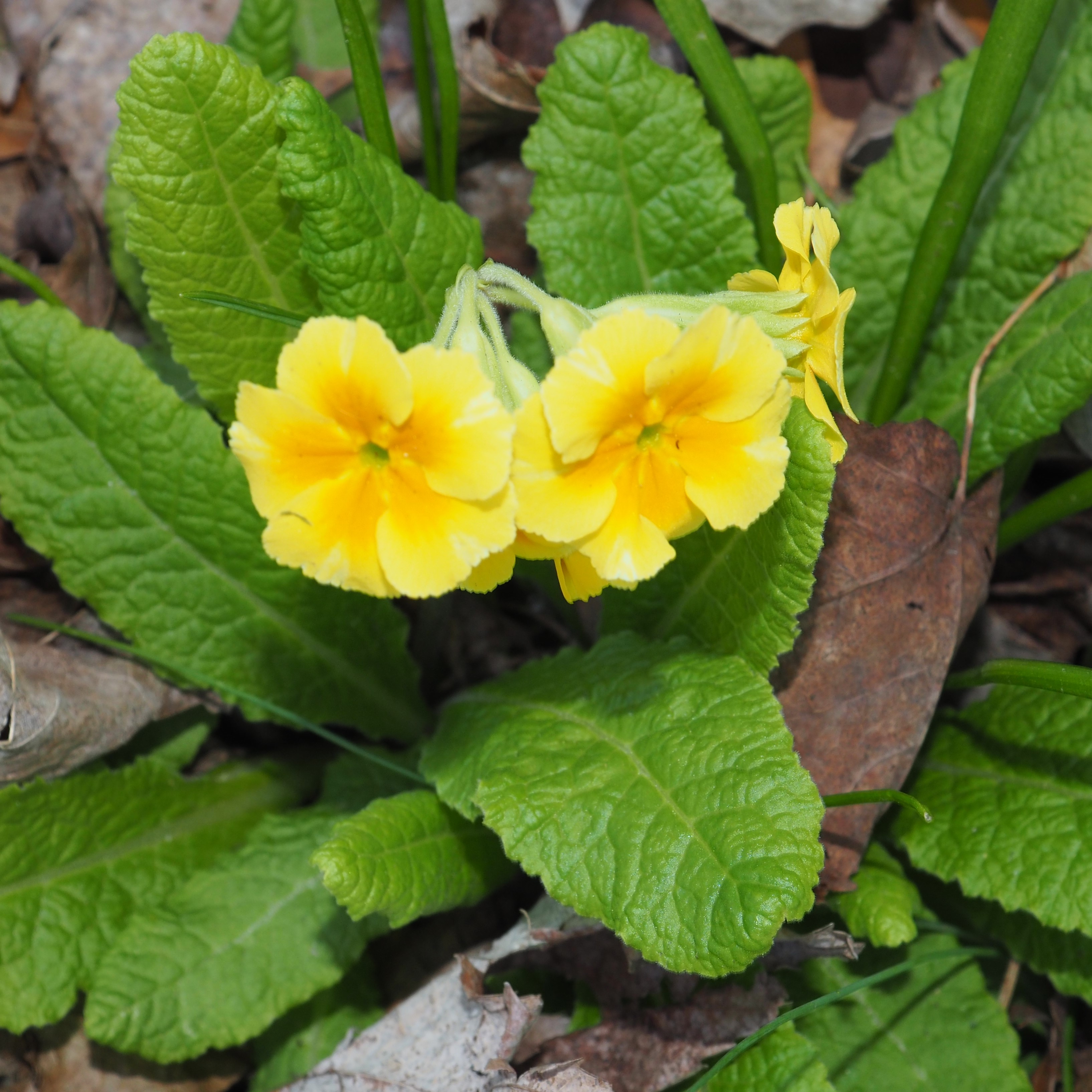
The Common House Spiders were so common this week, so I could eat up a couple of rows showing them to you, but I suppose you have seen enough for now! There were also a lot of Cobweb Spiders - most of them about the same, so let me just mention a couple of them. This one with the nice spiral on its sides is a Cobwebber too, and I could have easily mistaken it for this Lyric Cobweaver if it had been a front view.
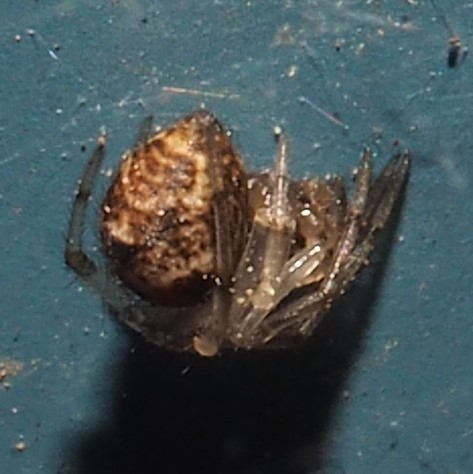
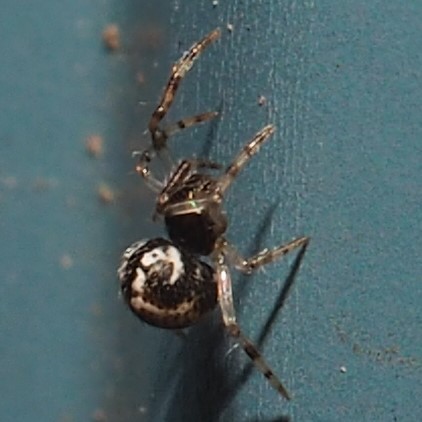
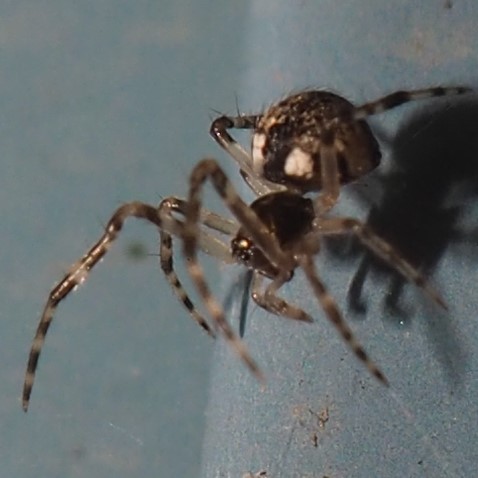
This Grammonota (a dwarf spider) had such nice clear markings I couldn't not show it. Another surprise was this very young Pirate Spider, genus Mimetus - one of my favorite spiders. Third is a really lovely Jumping Spider, of the Hentzia genus. It would NOT show its headlights but really cheered me up. Actually it is called a Long-jawed Jumping Spider, which is not a Long-jawed Spider but is a Jumping Spider. Go figure!
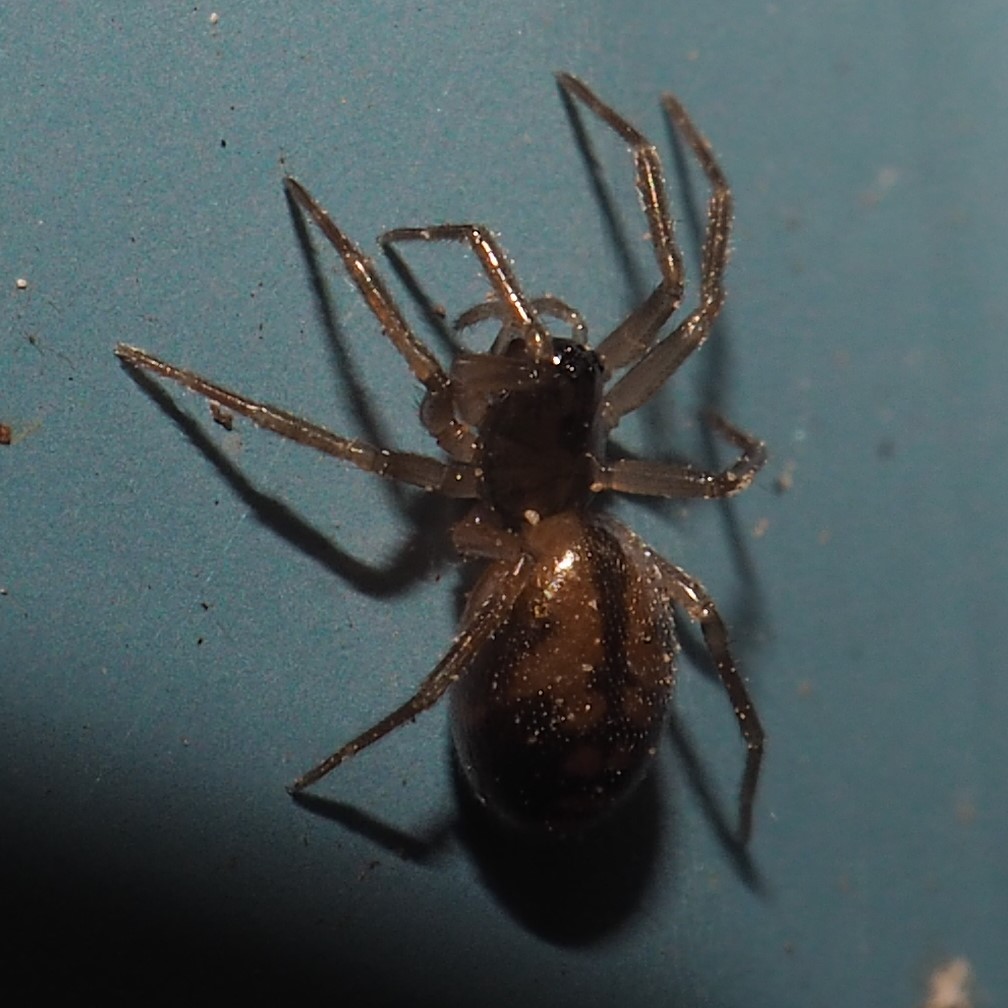
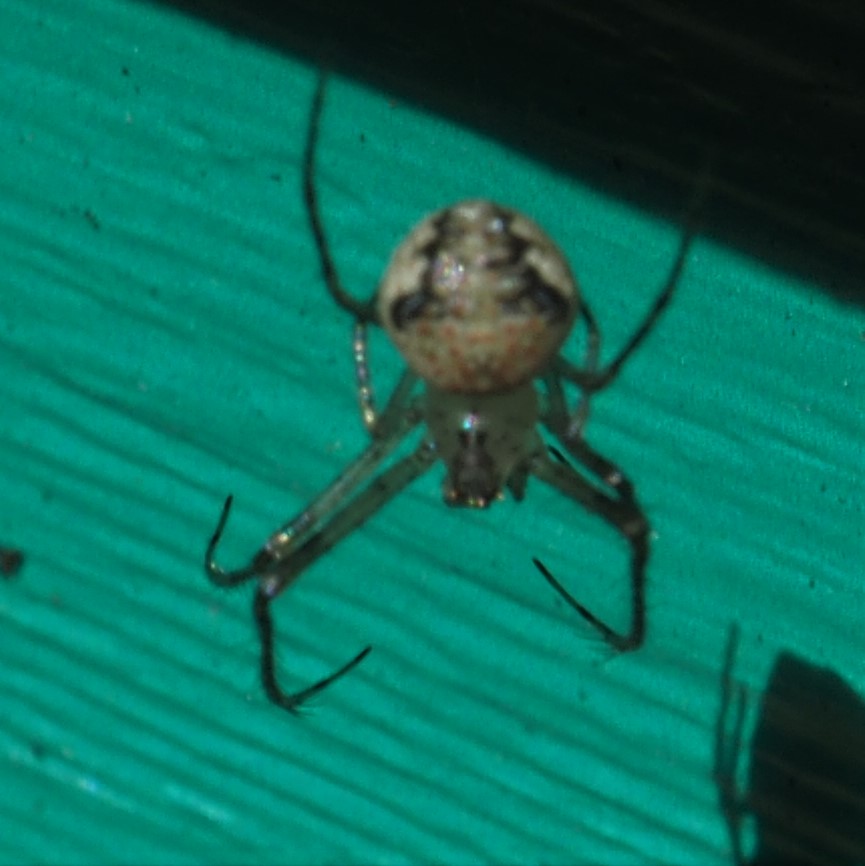
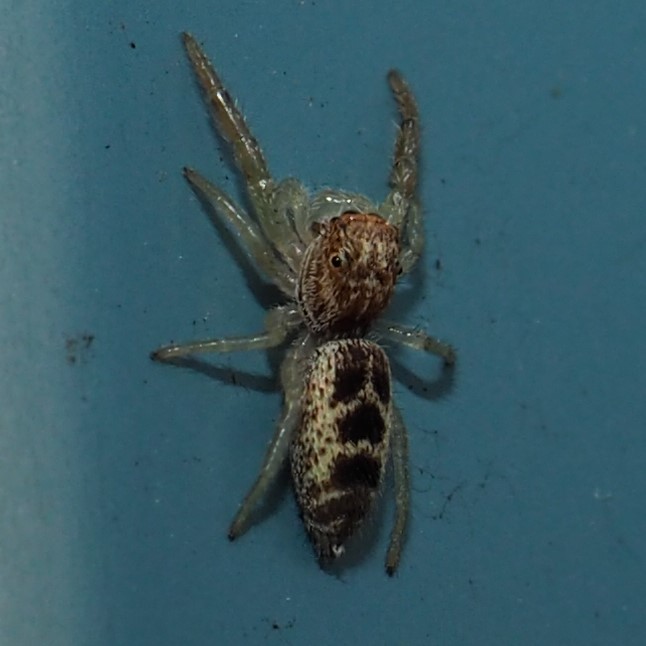
When I tagged "sp" to search on, I got all the spiders but also my beloved cat Spooky. Usually her "friend" Tripper hogs the picture, but this time, Spooky was in the top cubby of their cat hotel and just daring me to take an unflattering shot. Impossible, of course. Next is another orphan, a tiny moth, in fact a Leaf Blotch Miner Moth. Last is a branch of Solomon's Seal, a plant that is open now and attracts hummingbirds. I wanted you to see a nice example of packaging. Each leaf is carefully folded into the ones surrounding it.
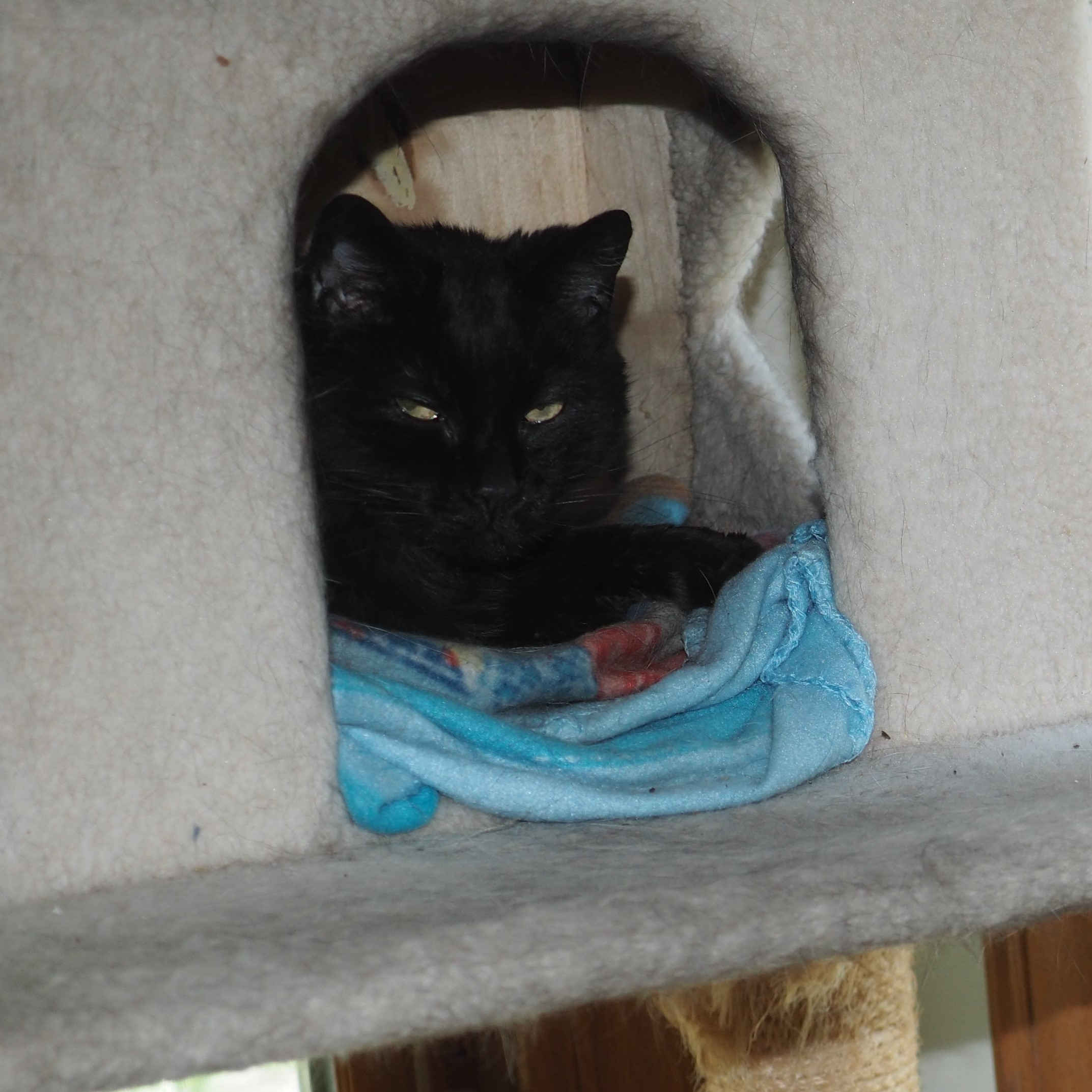


Here are just a few of the fishes responding to the fish food flakes floating on the surface of the pond and eagerly chowing down.
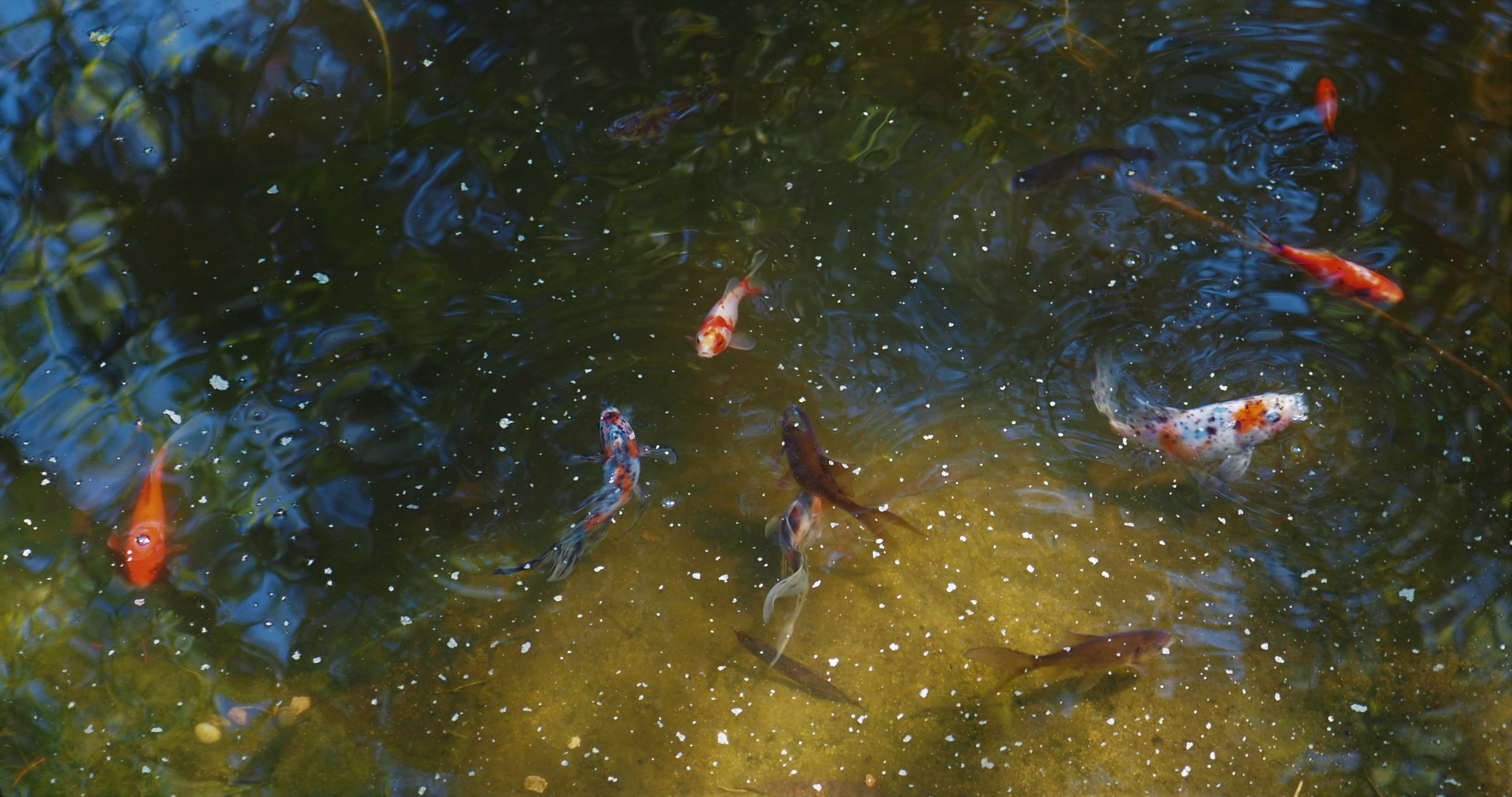
And here we are, still socially distanced. I fill my time with sneaking up on bugs, trying to find them in the most interesting poses and then trying to figure out what they are so that I can share this with you. I'm also working on a small chest of drawers for the living room to try to put away the piles of sheet music that covers most surfaces. I'm hoping to turn this part of the living room into a music room where my friends can play some good old Baroque music (hence the name of our street, Burr Oak)! I hope you all have something to fill your hours with pleasure and can play with your friends by phone or Zoom. Could you have imagined this last year?
Love, Martha
Back to May 3, 2020
Forward to May 17, 2020
Back to main menu
copyright Martha O'Kennon 2020












































































